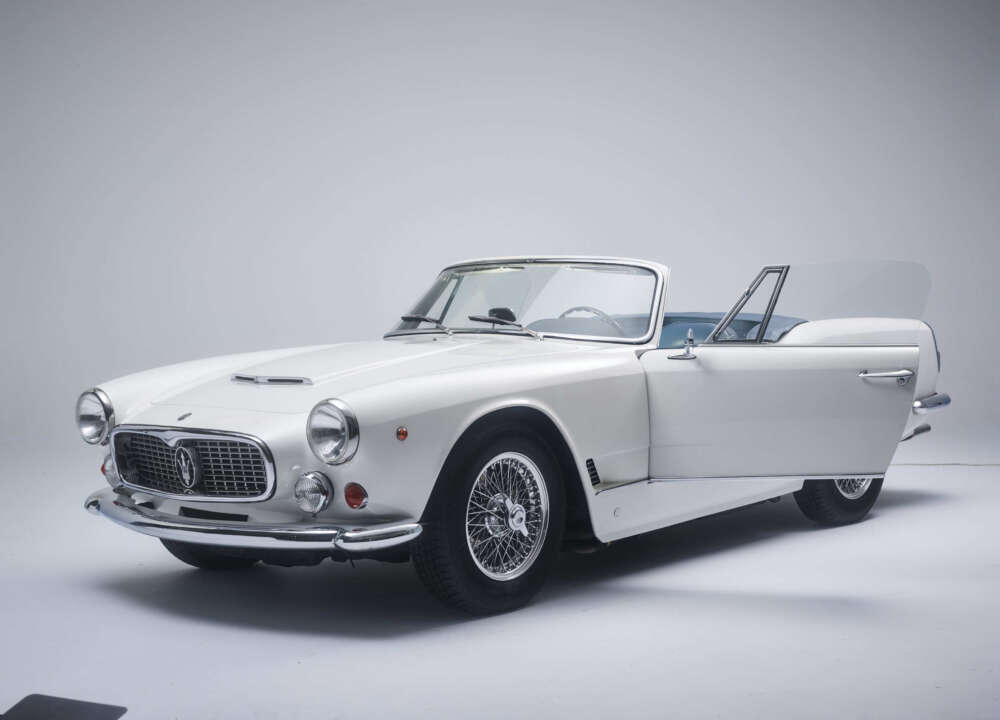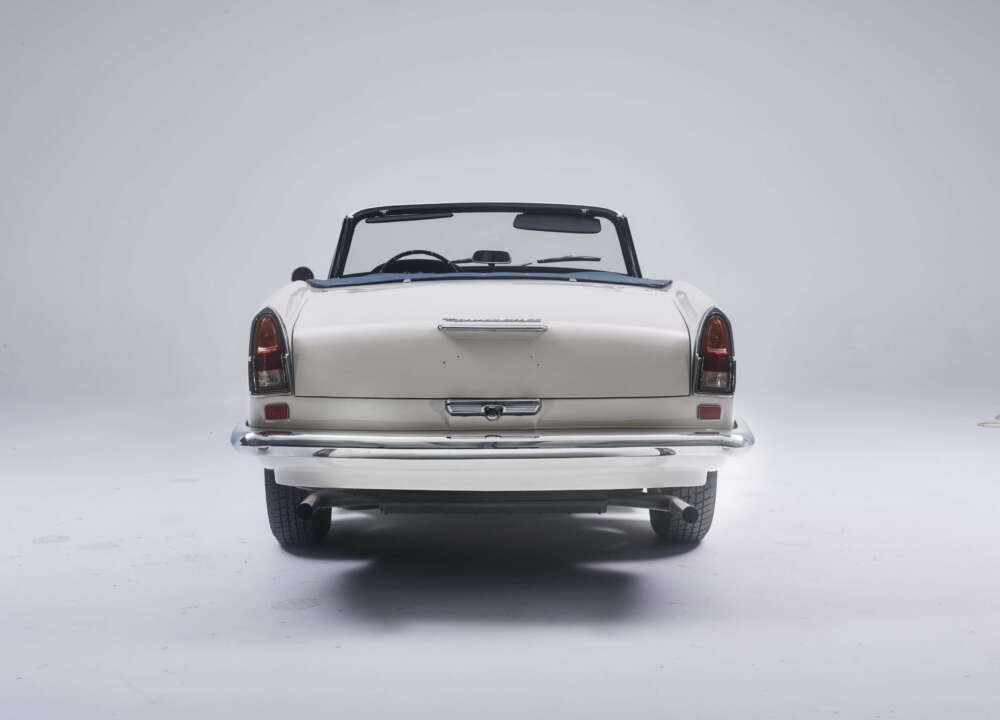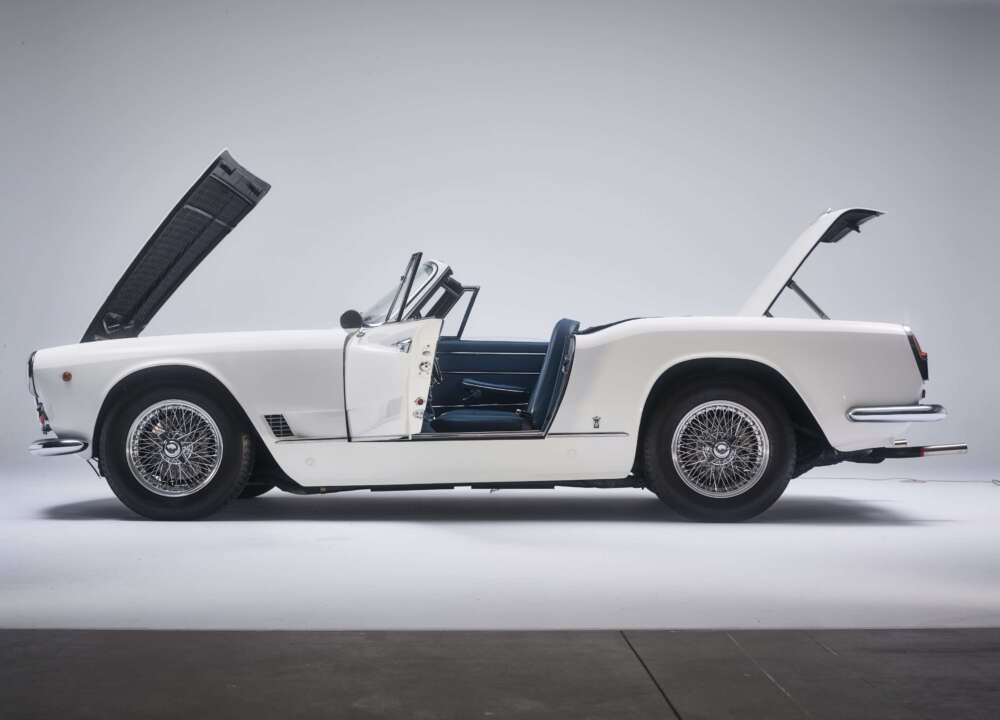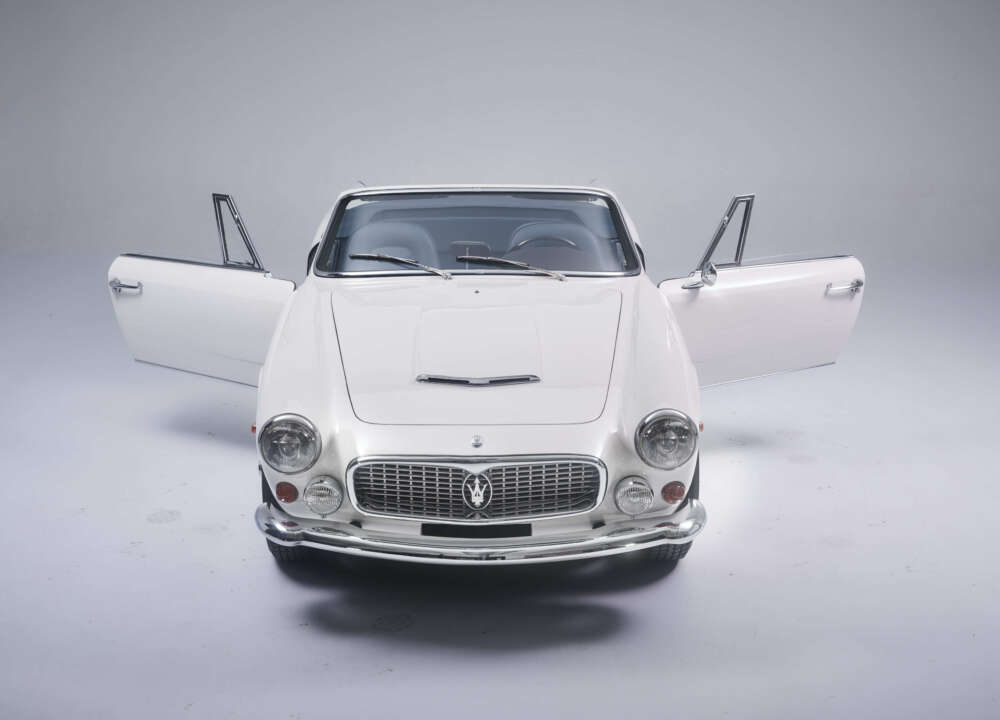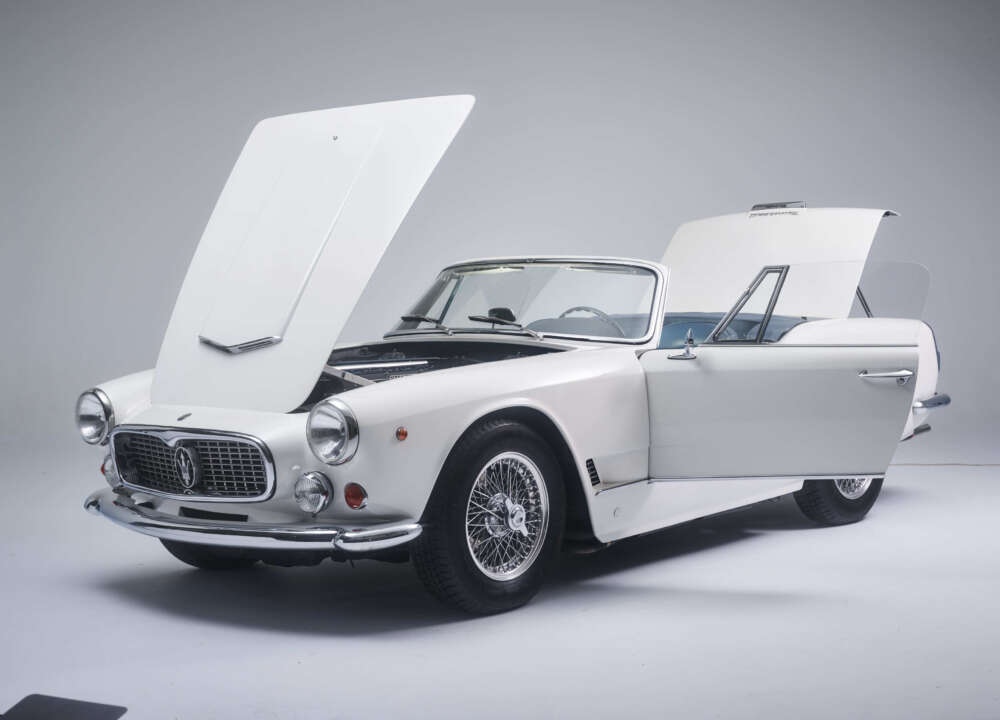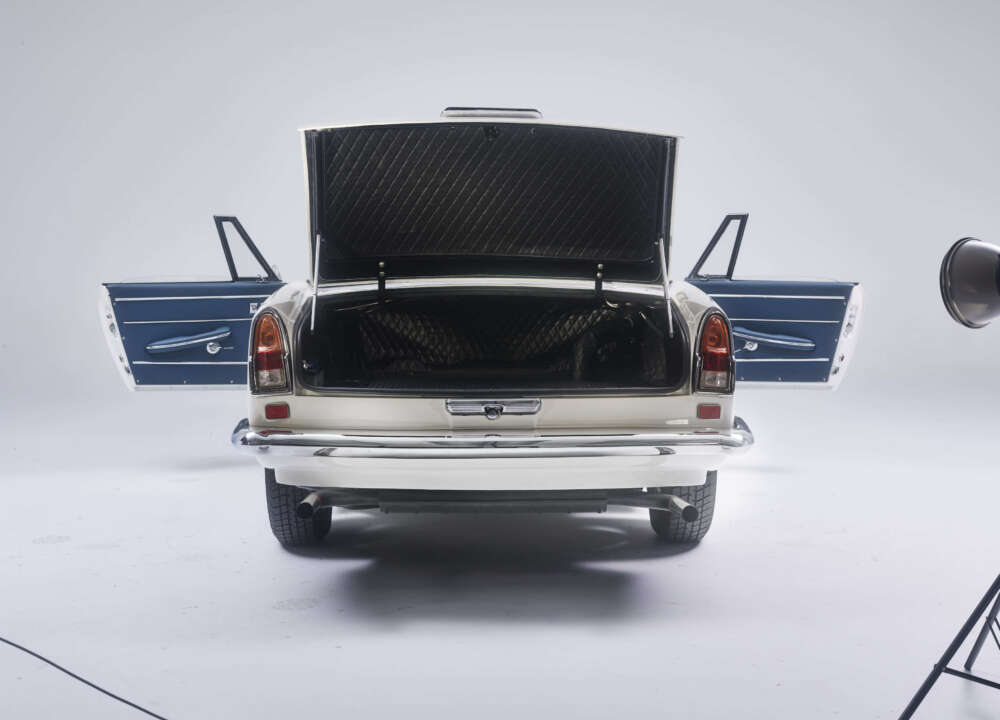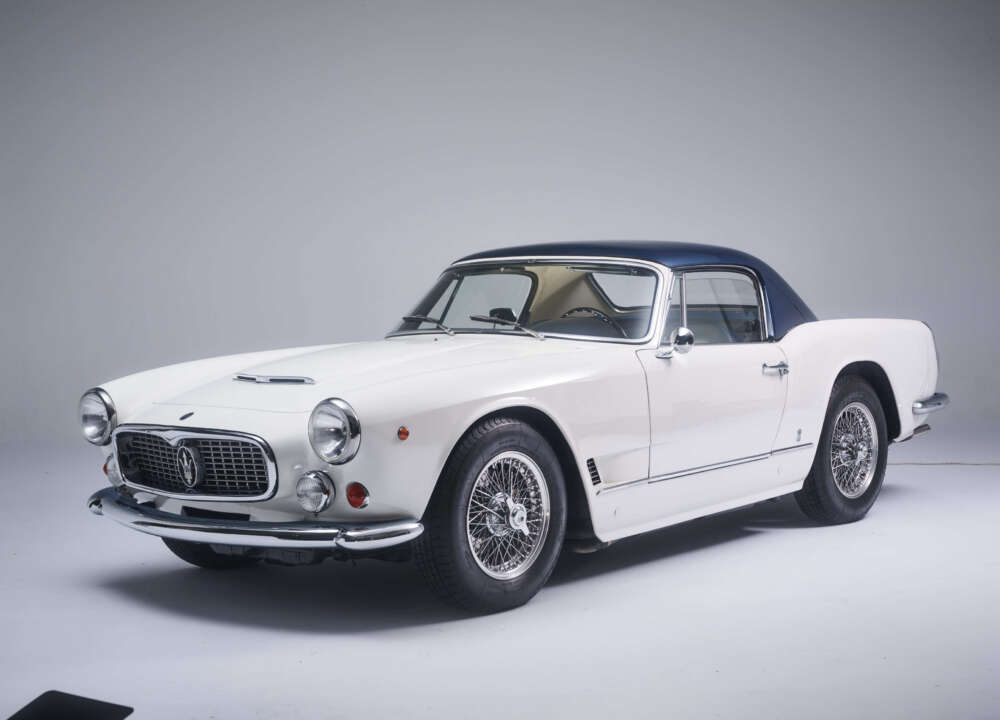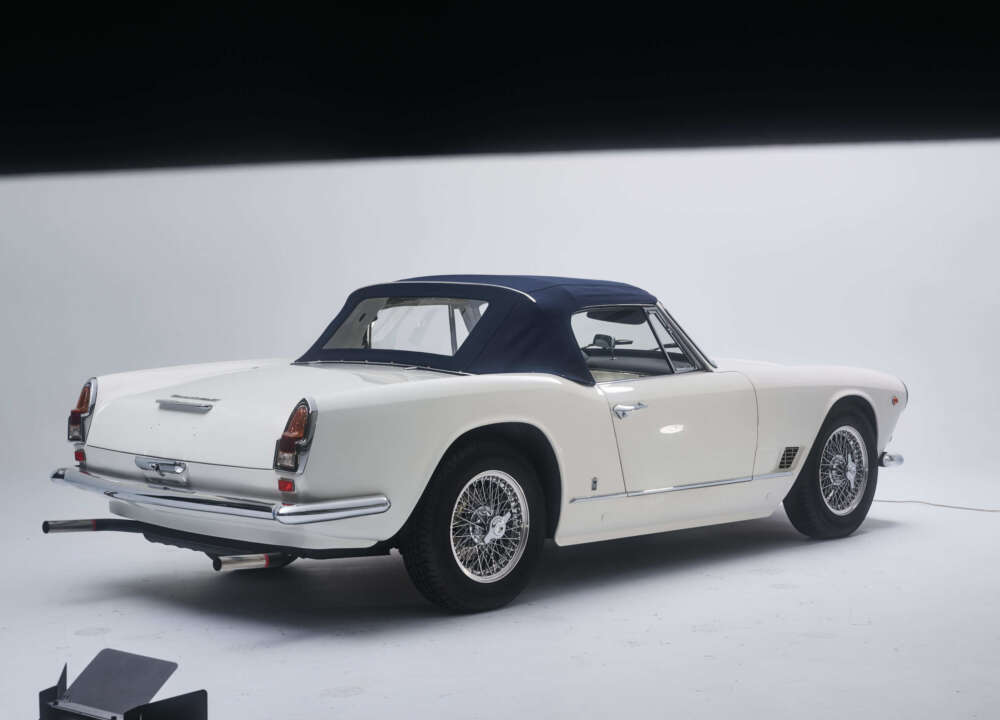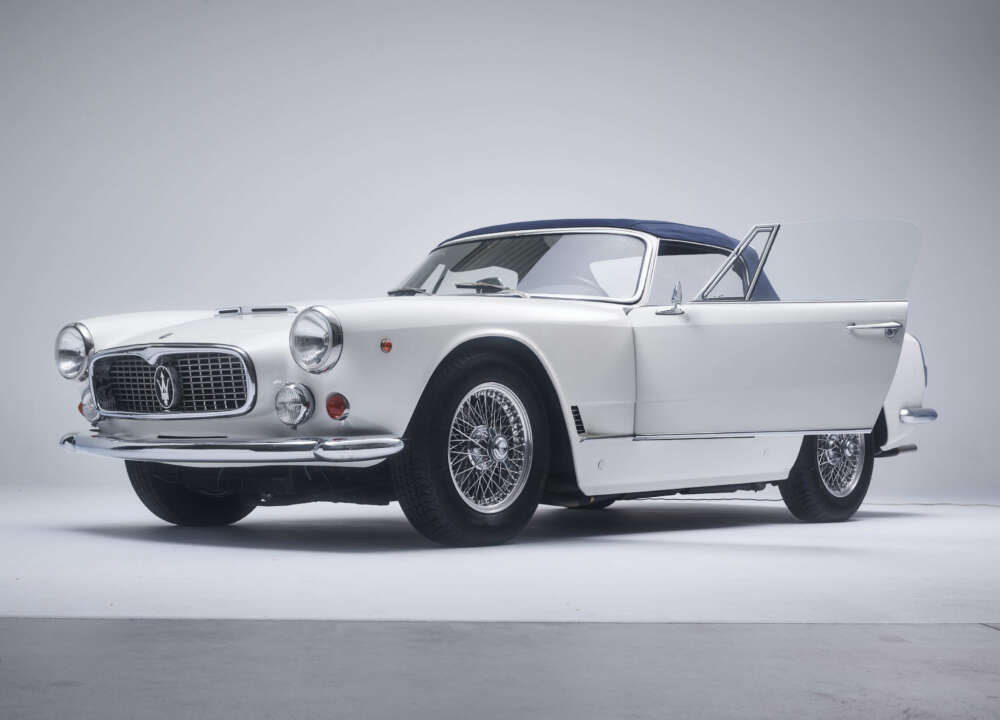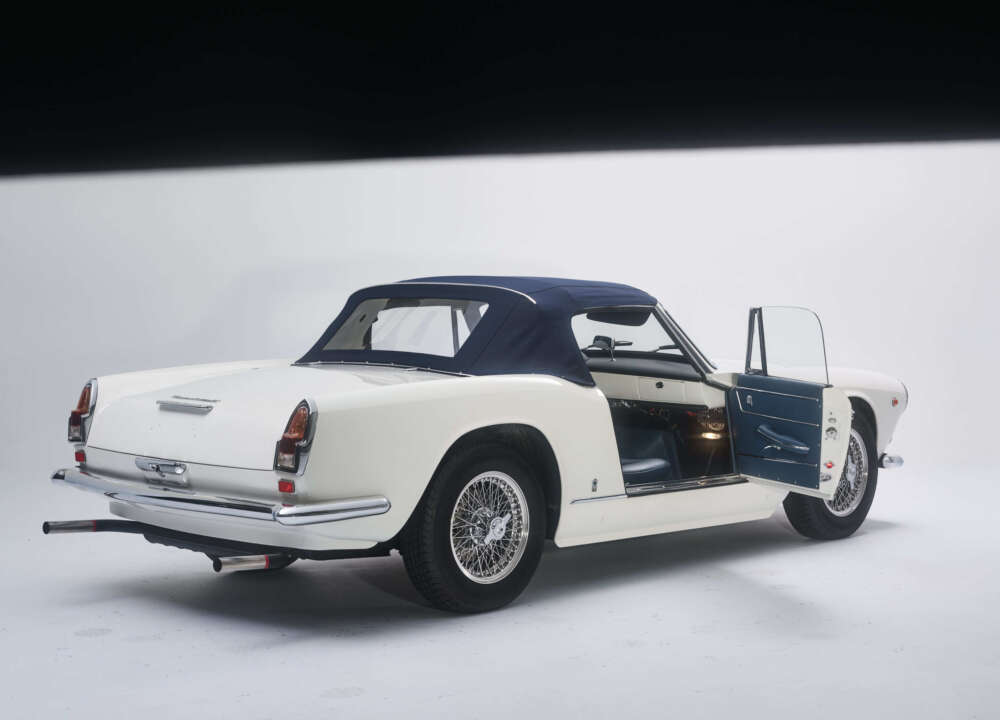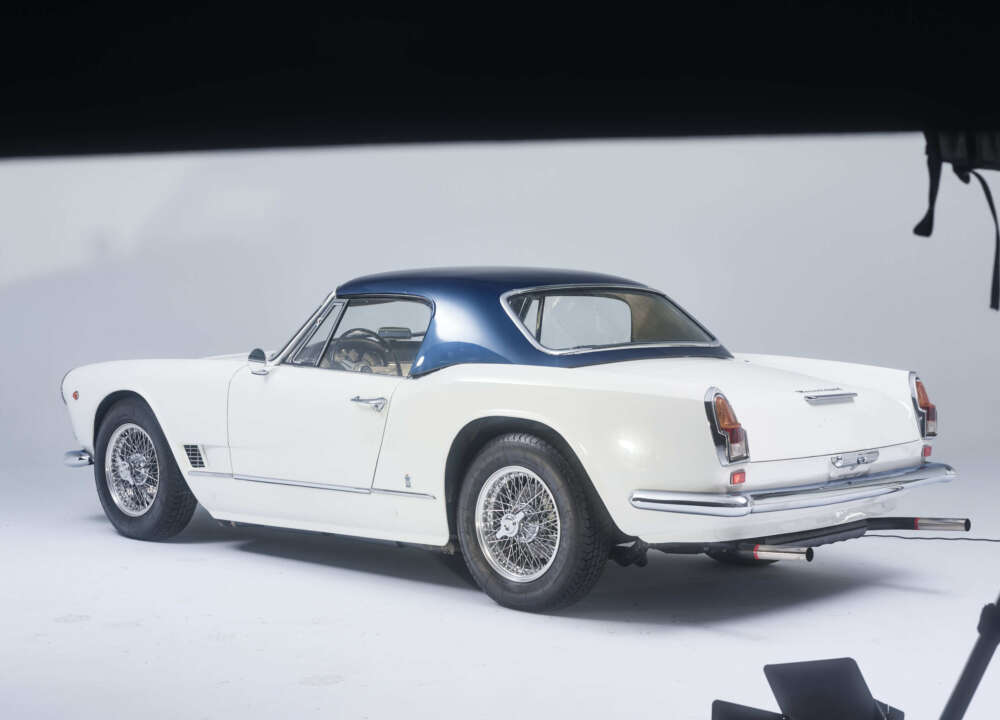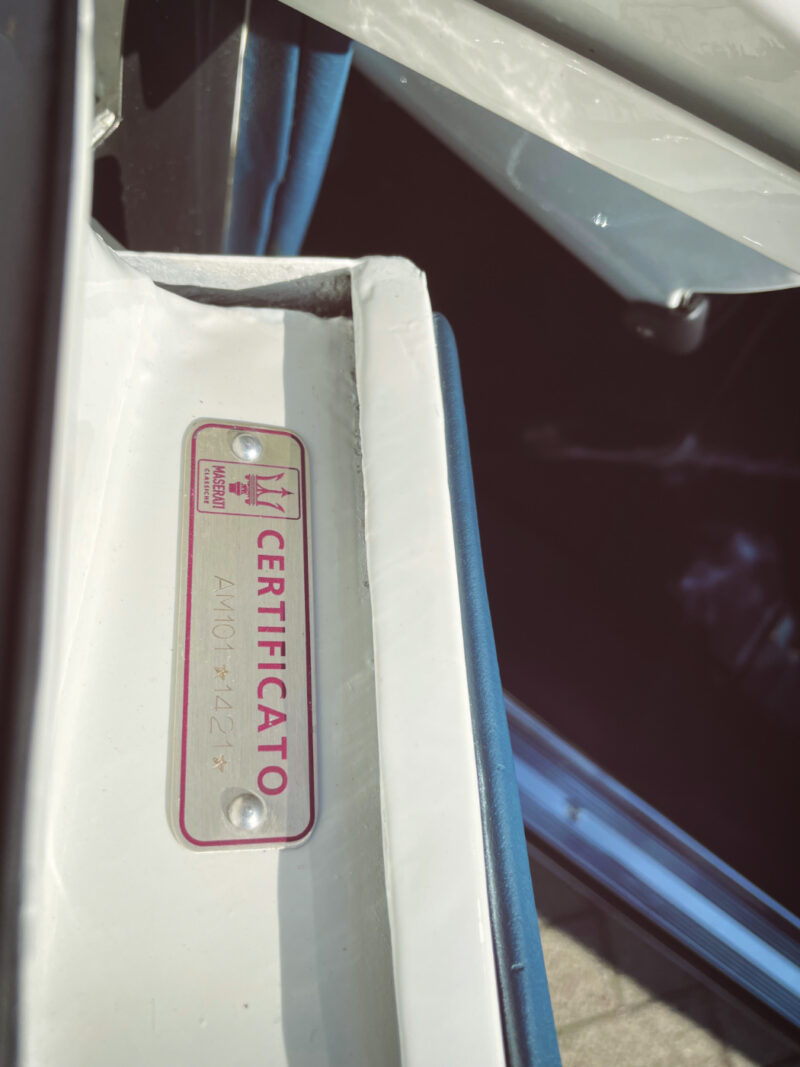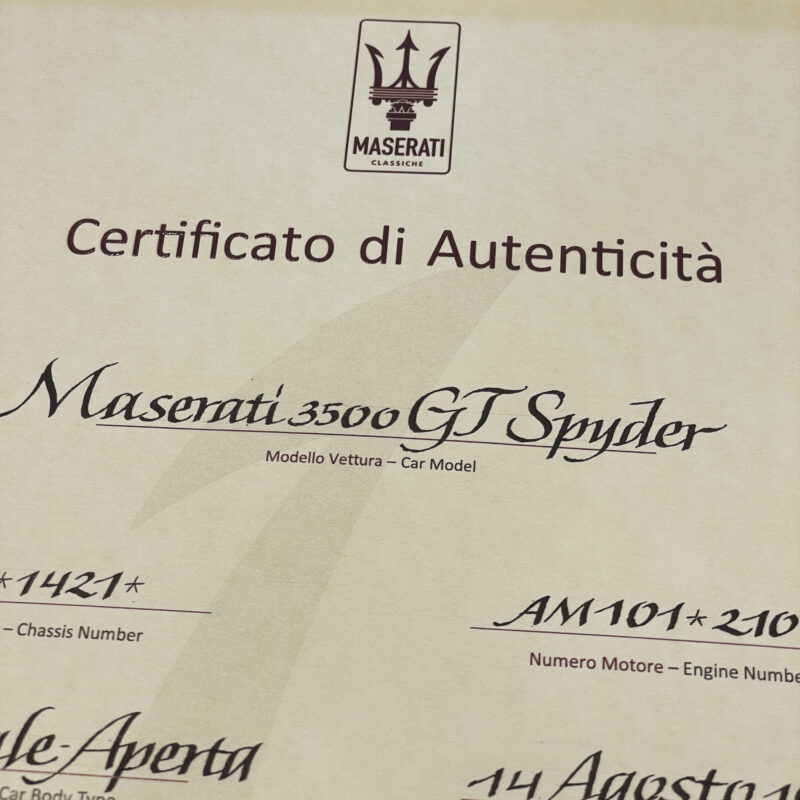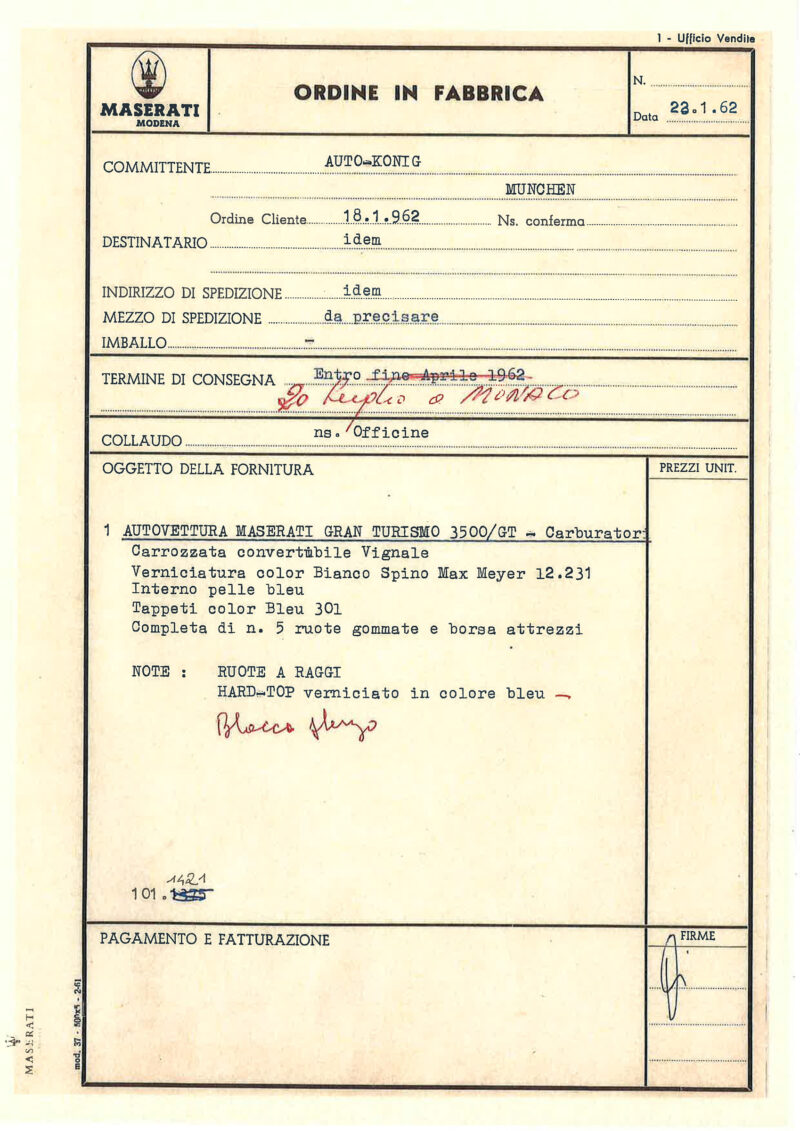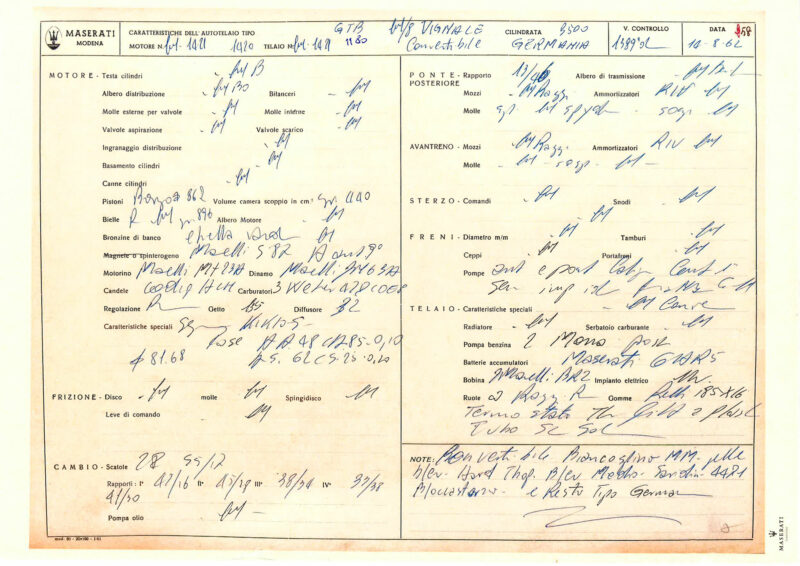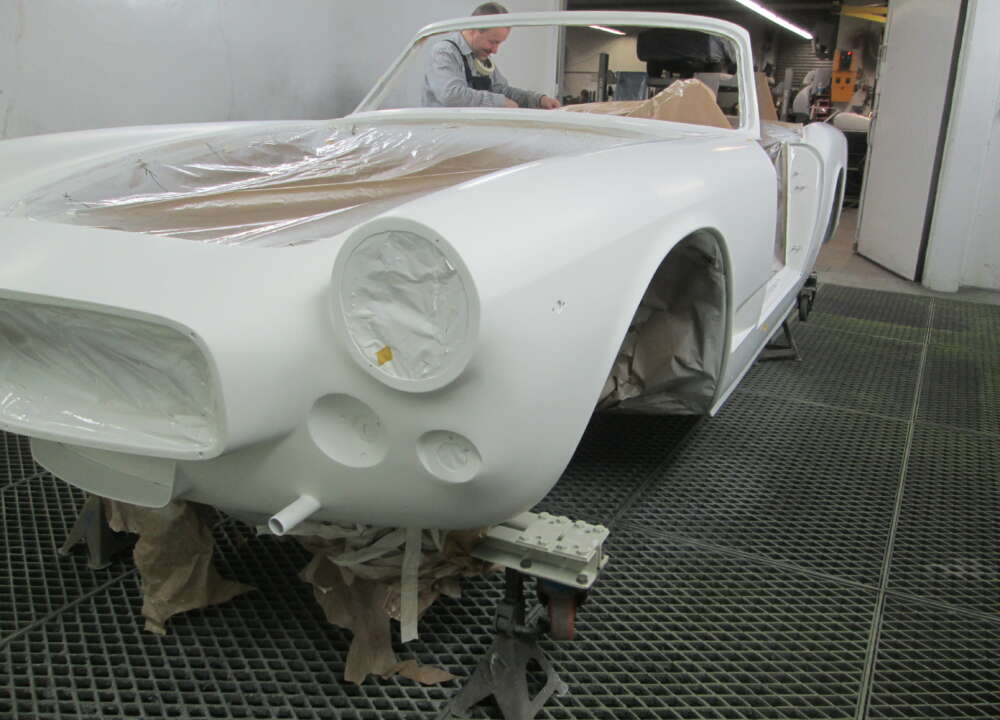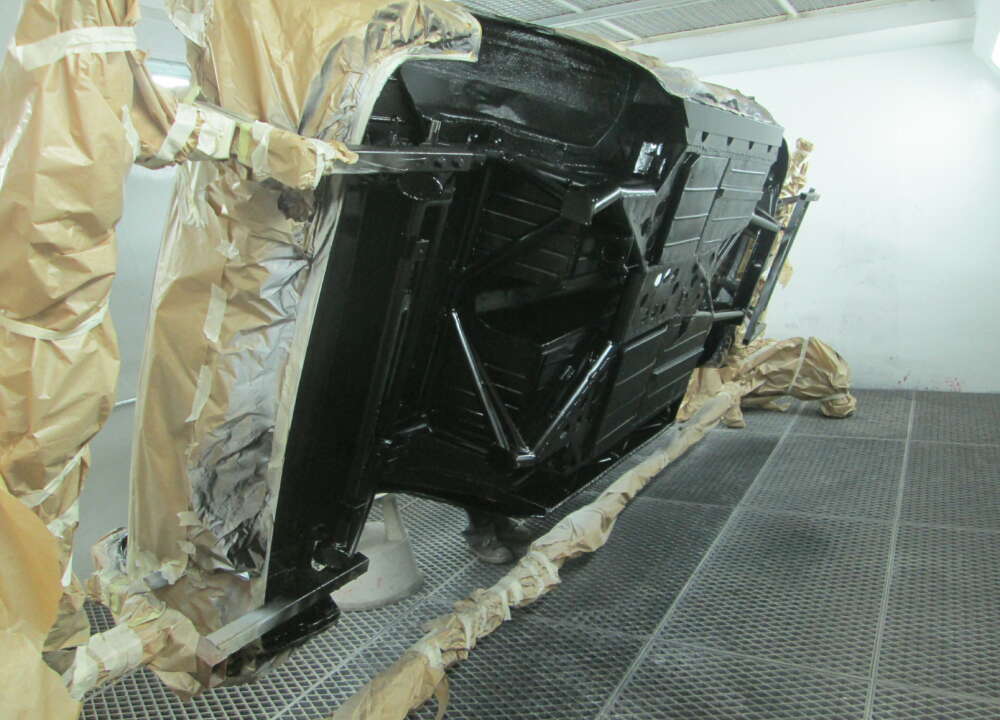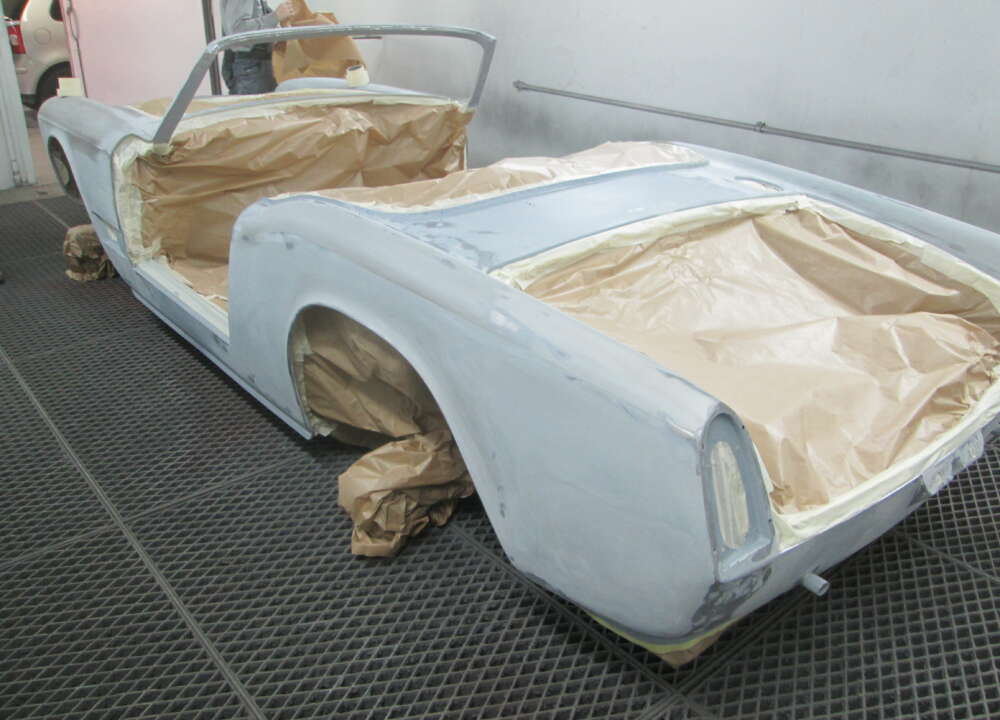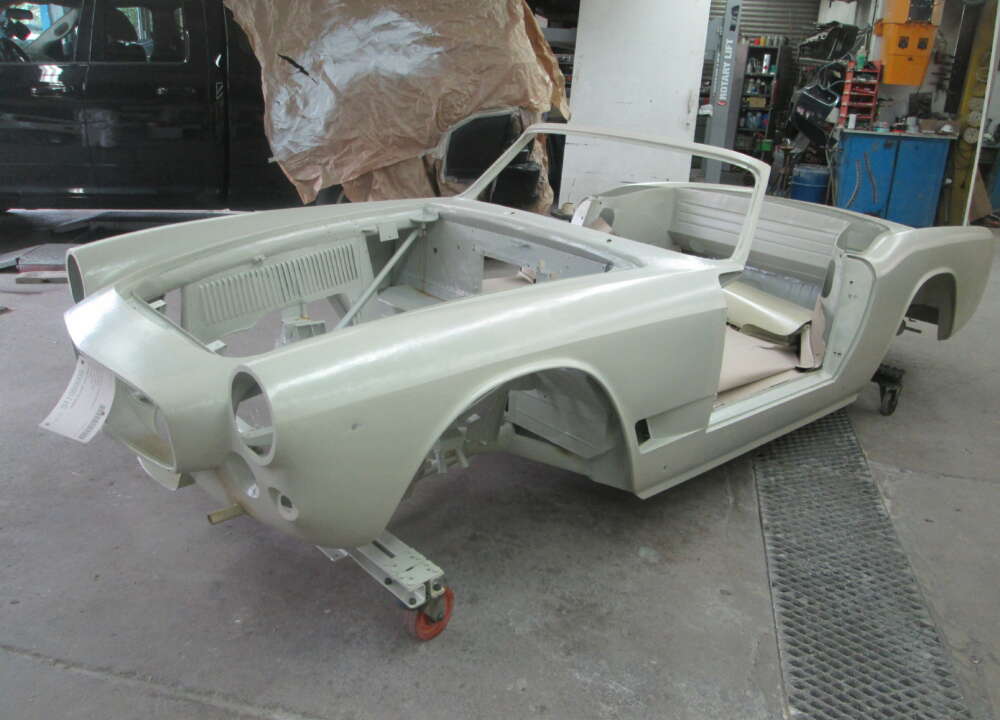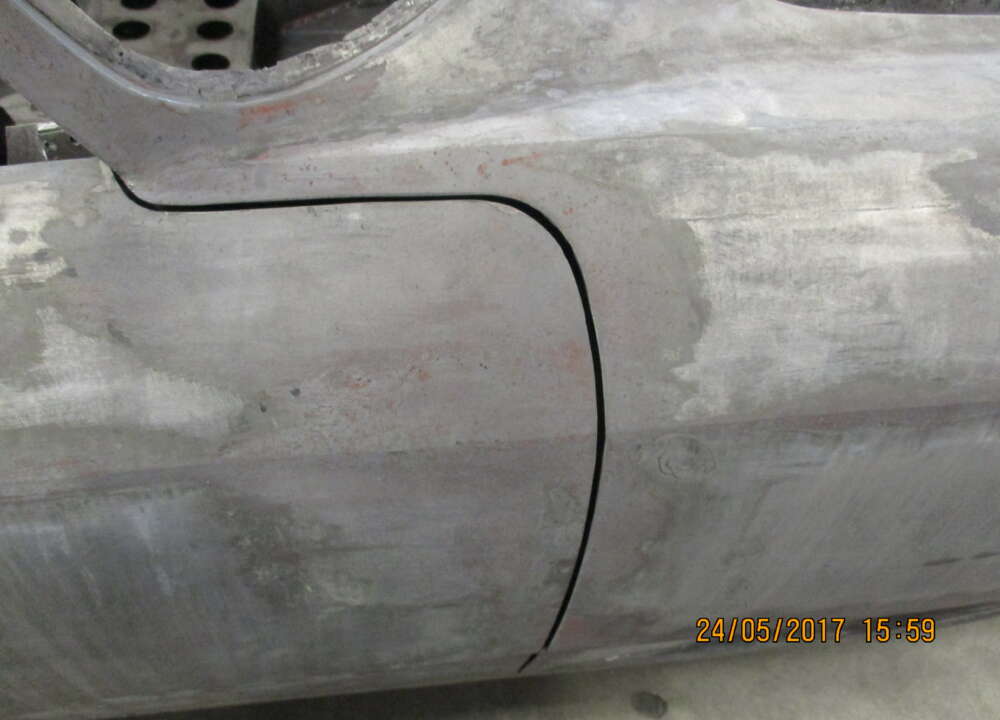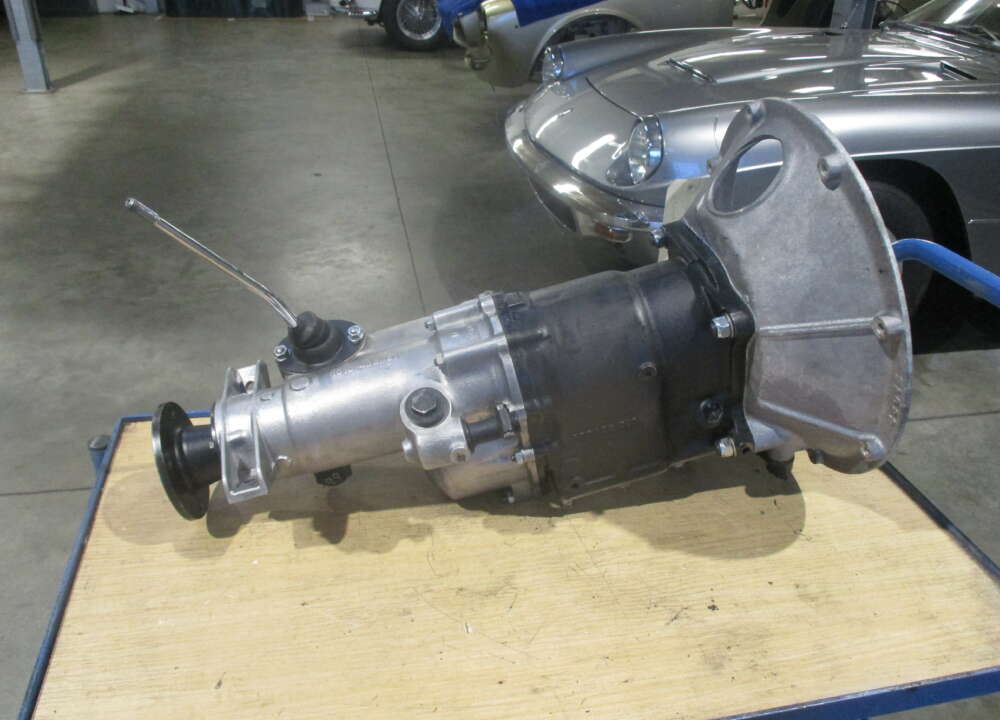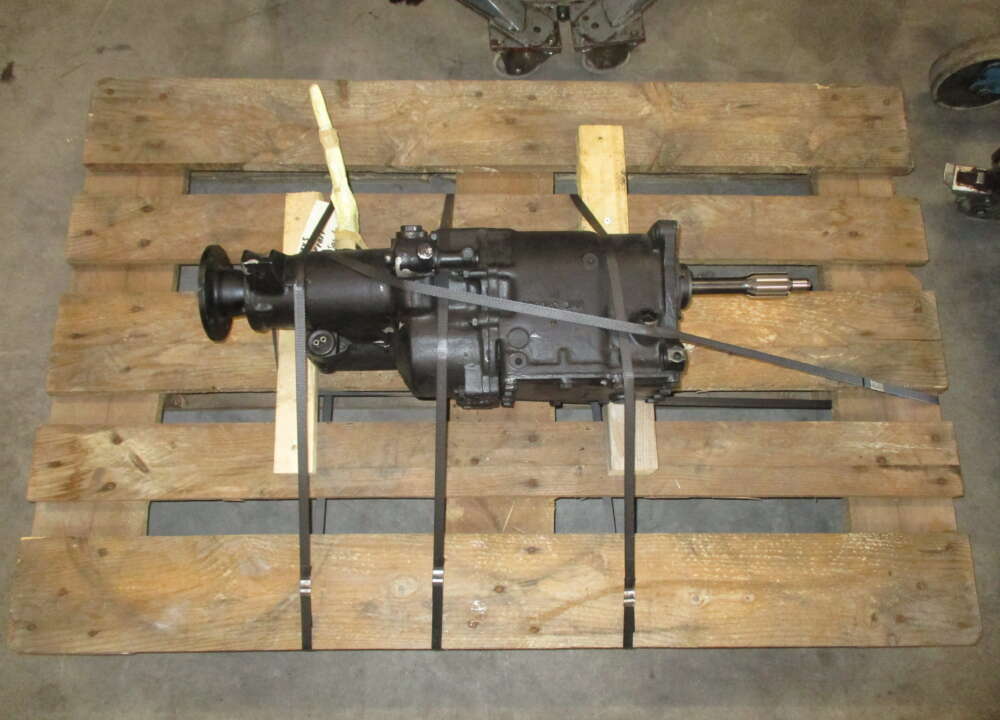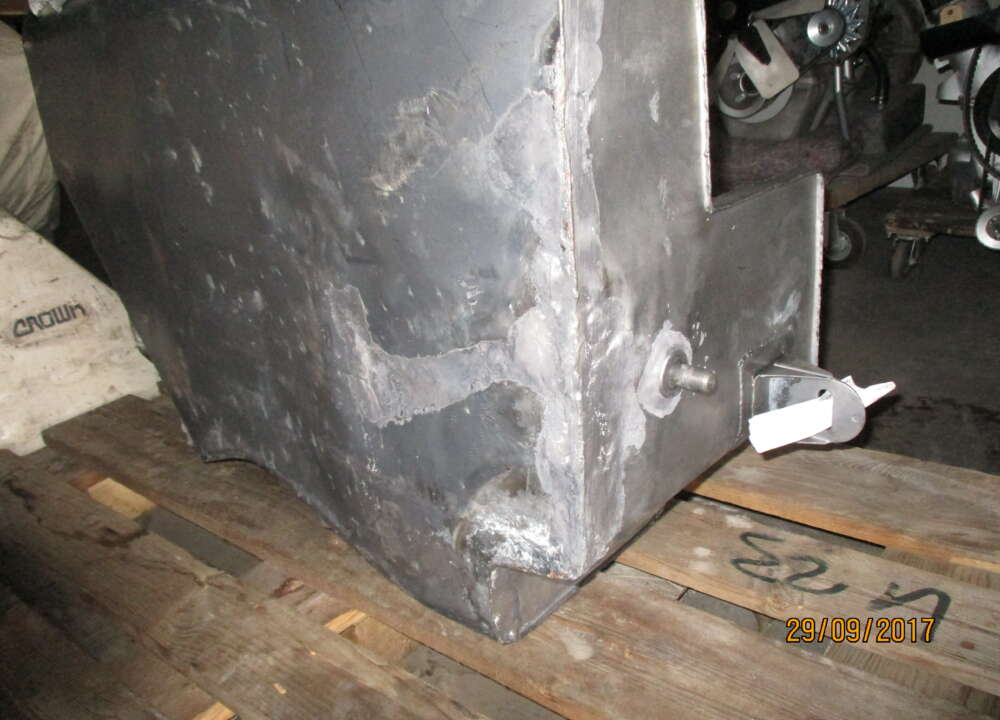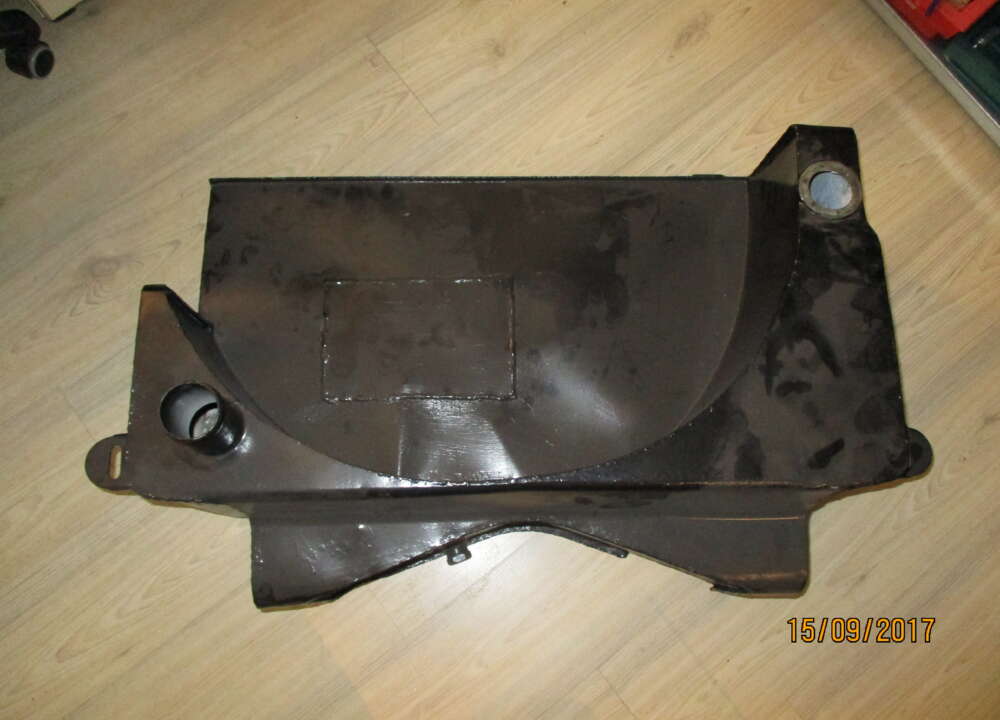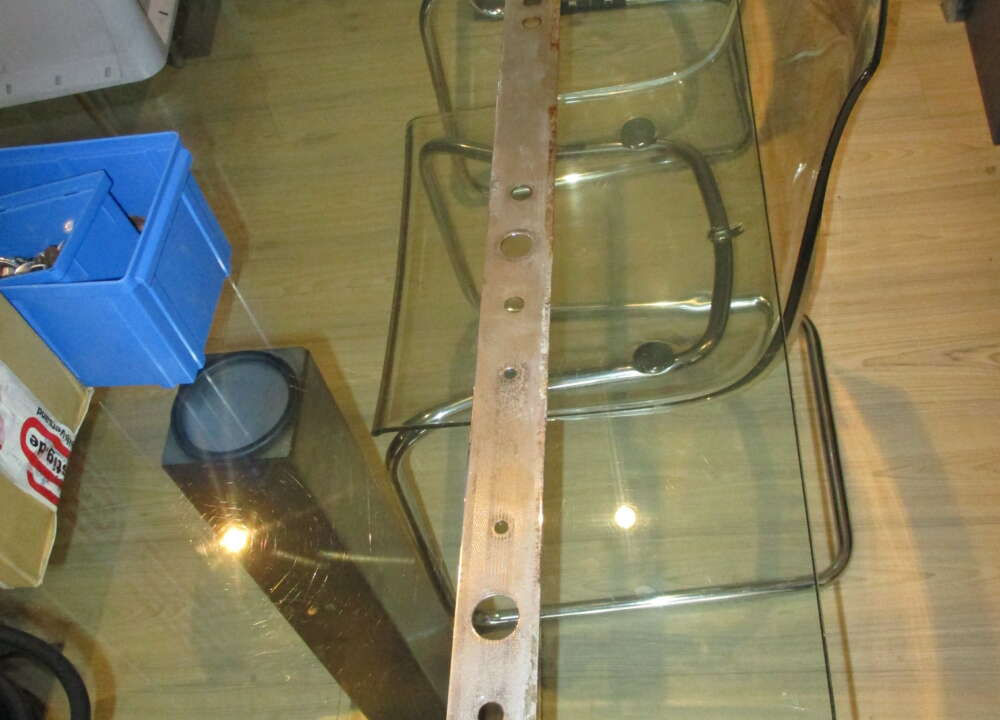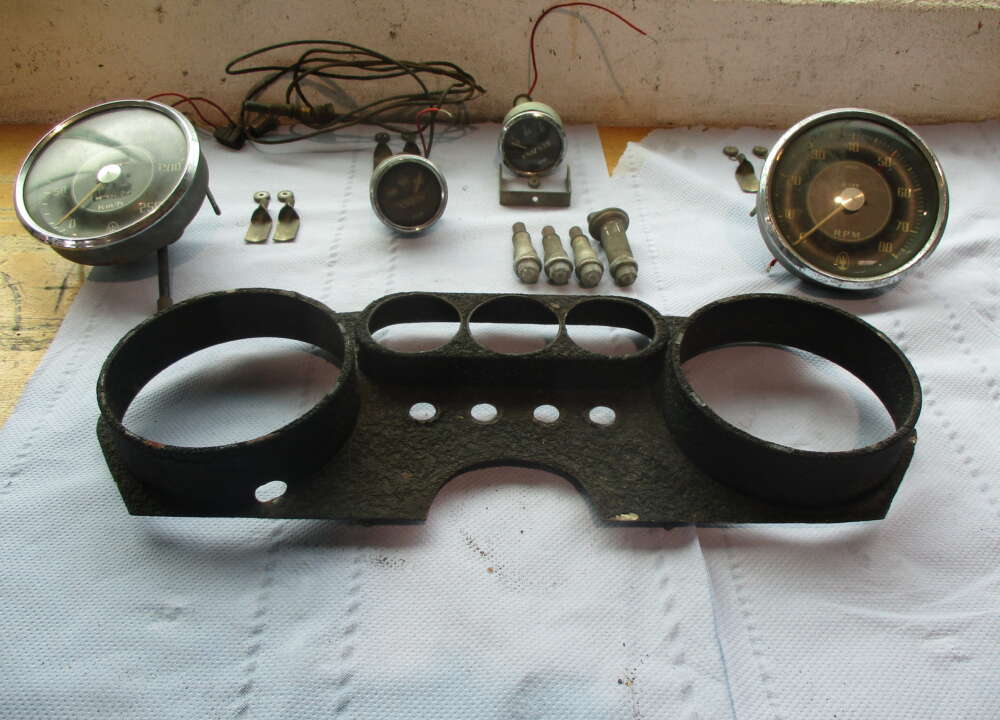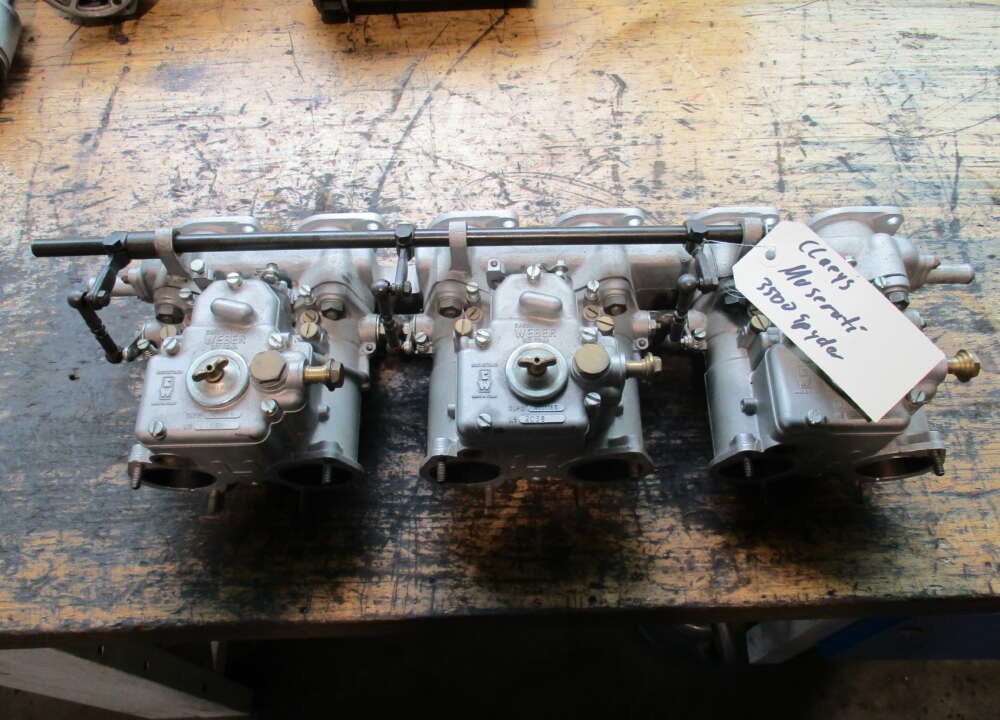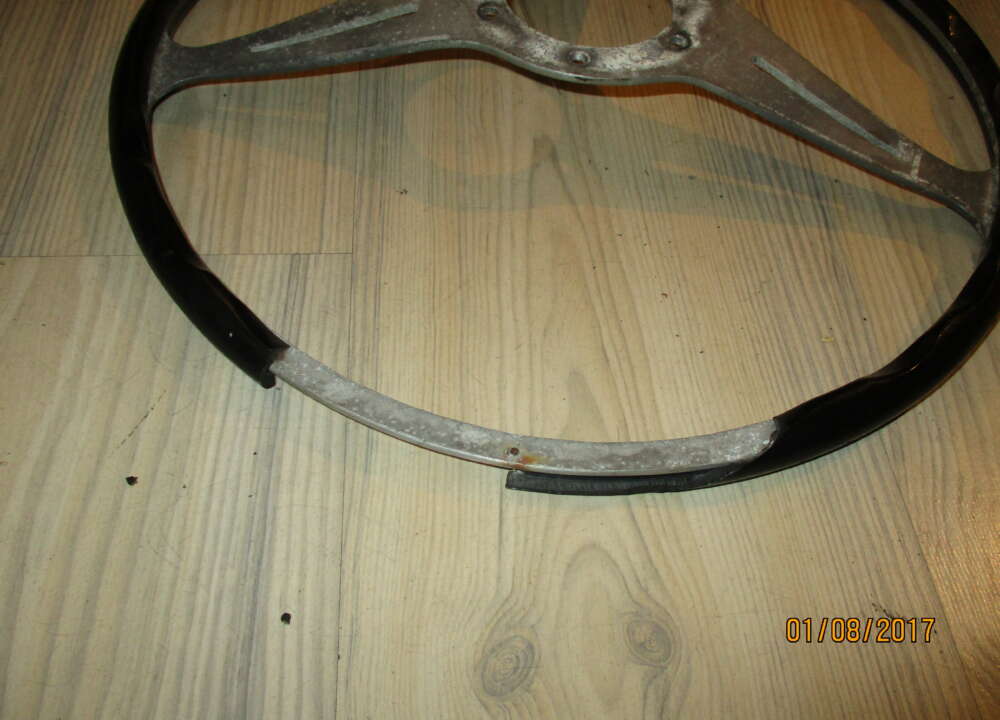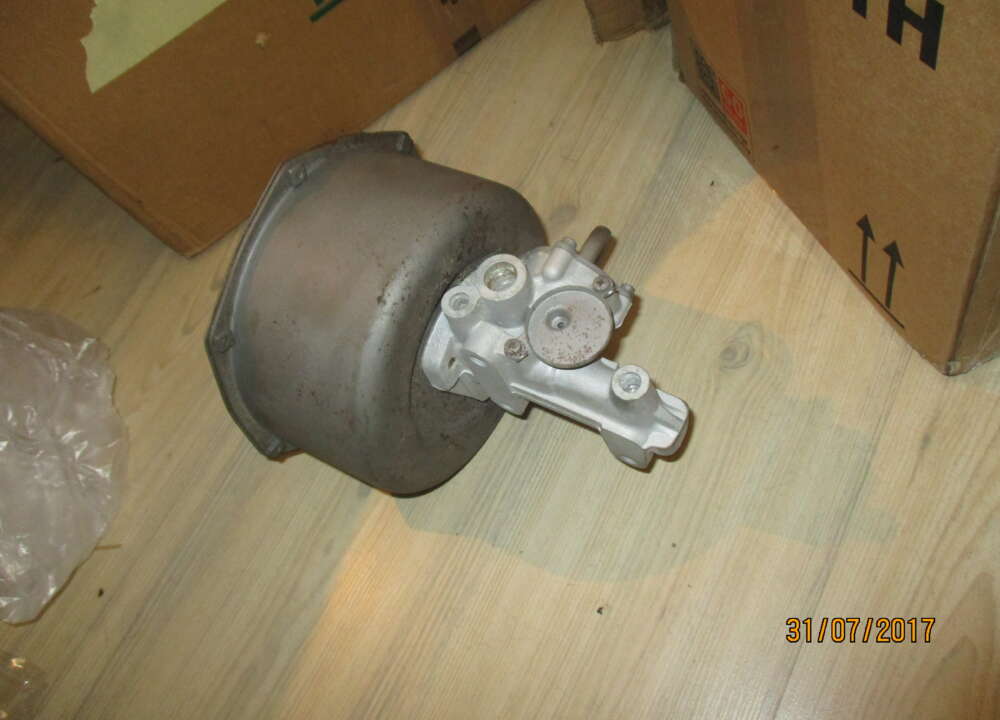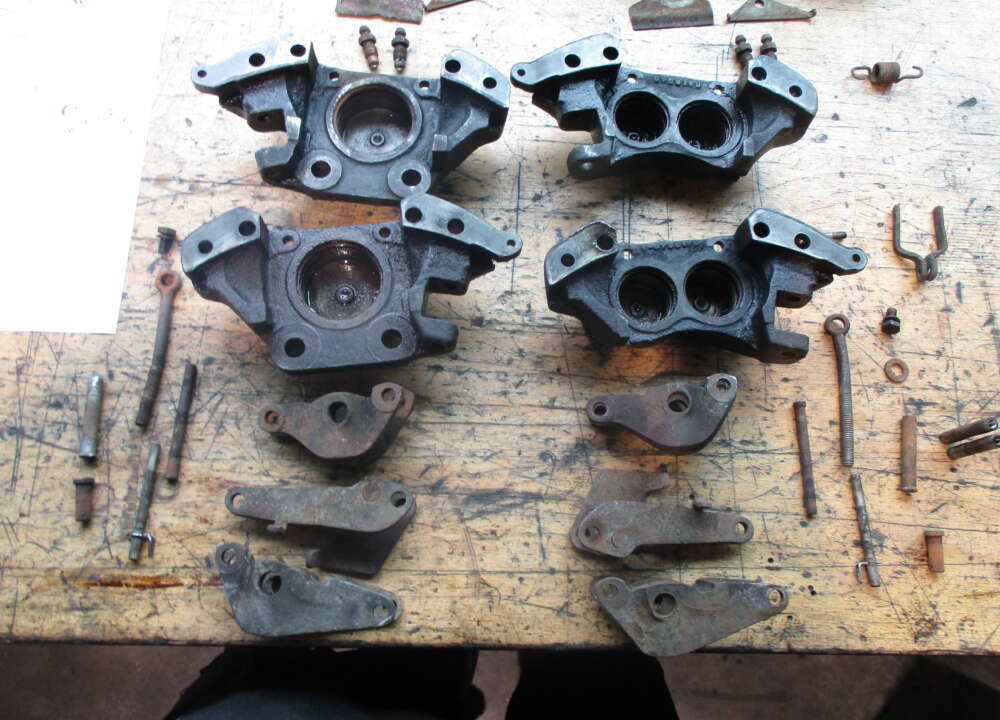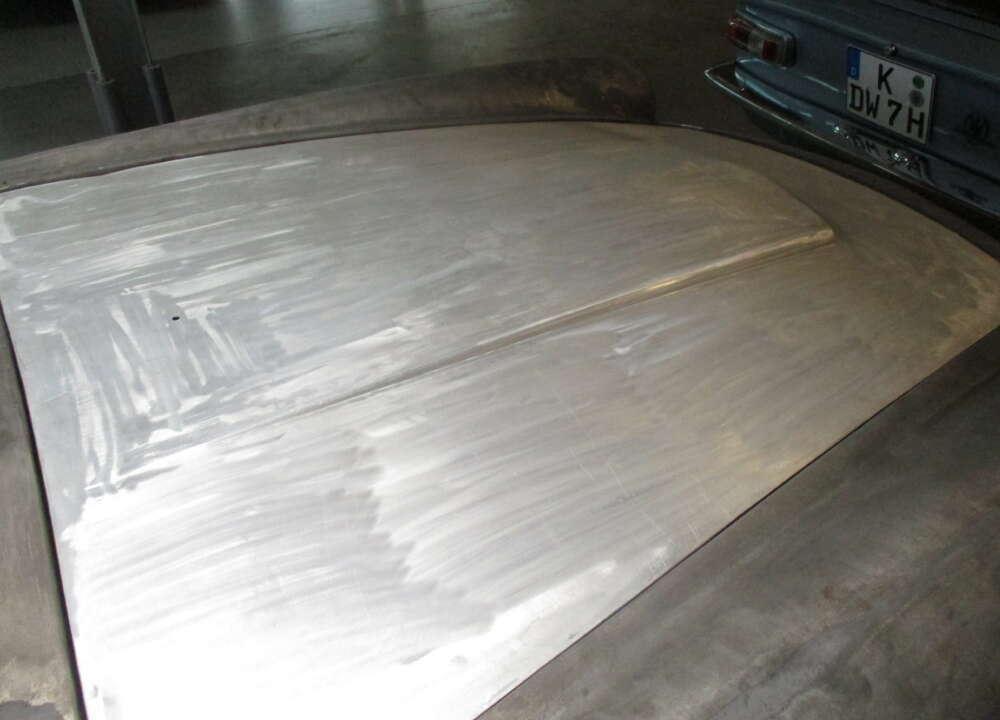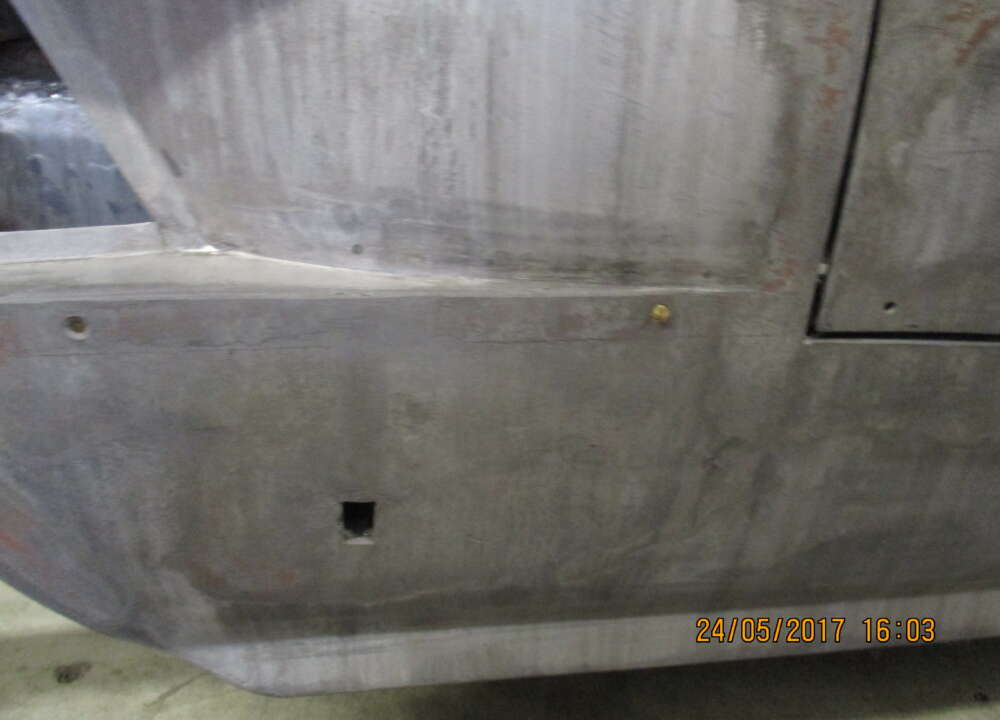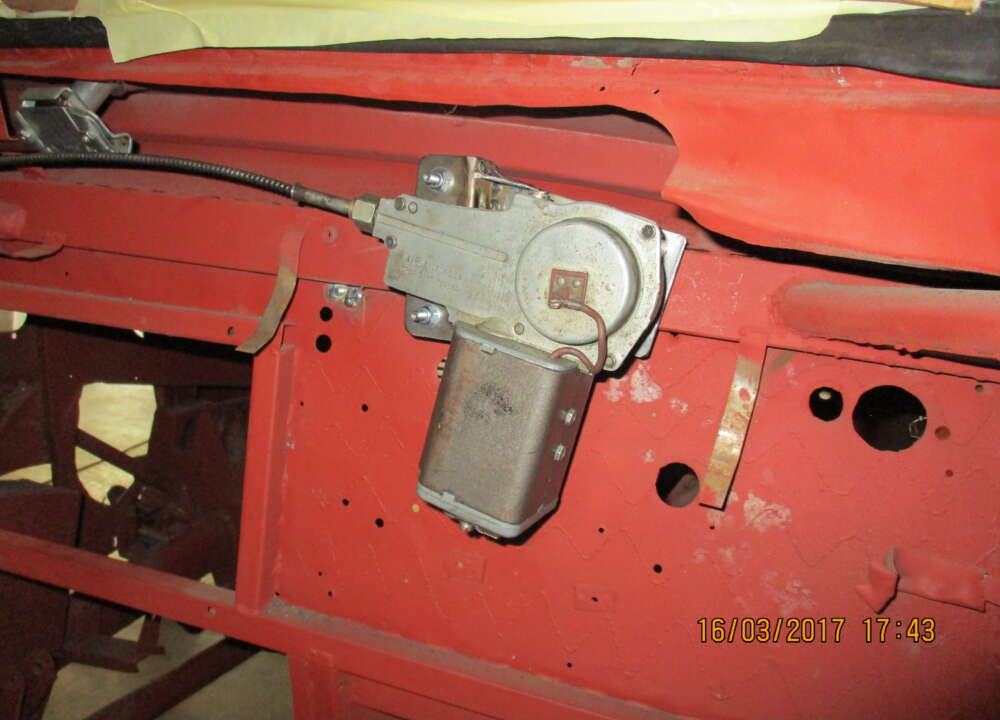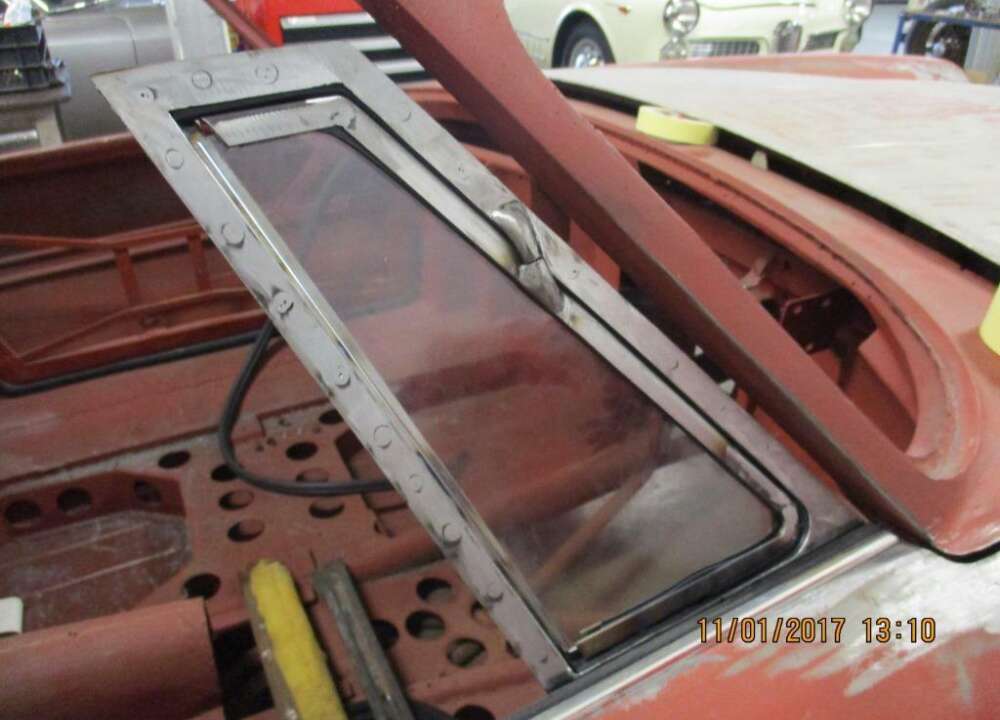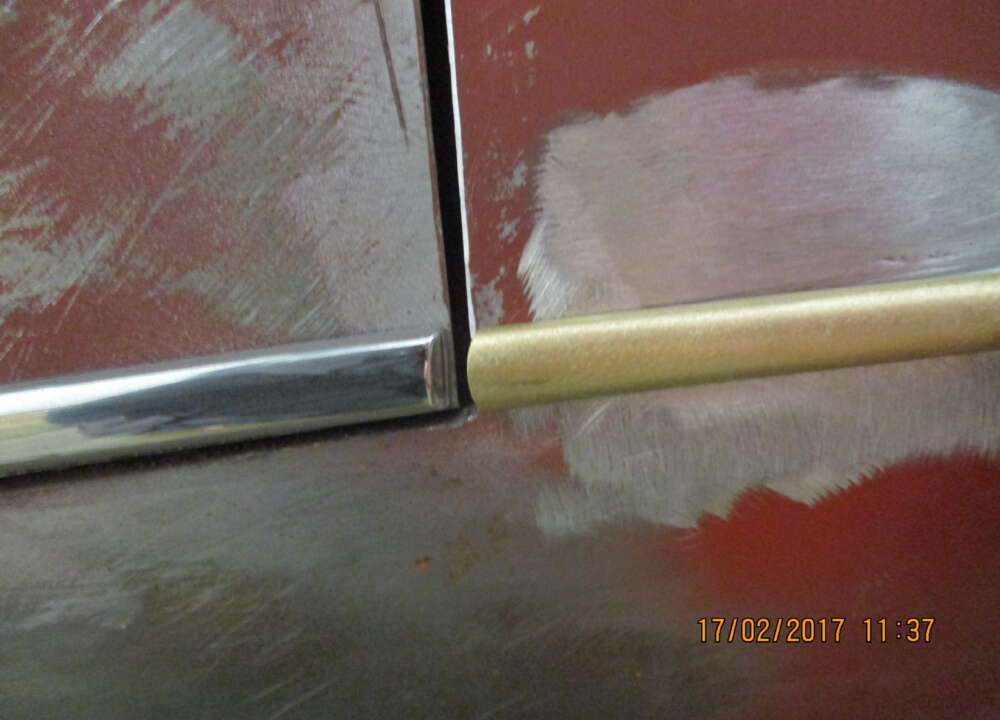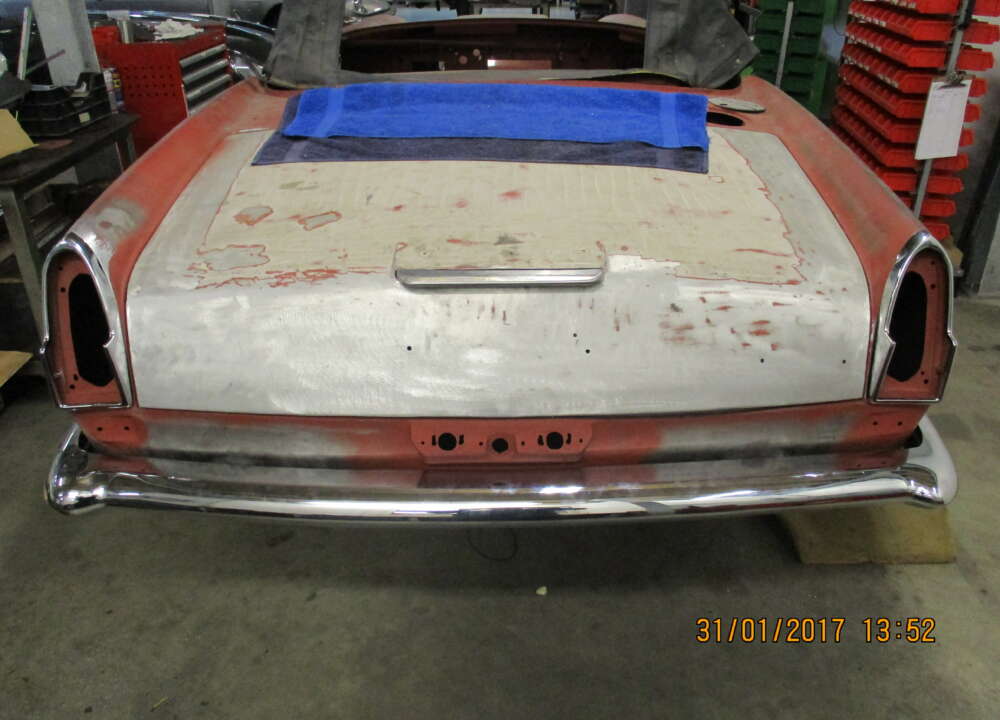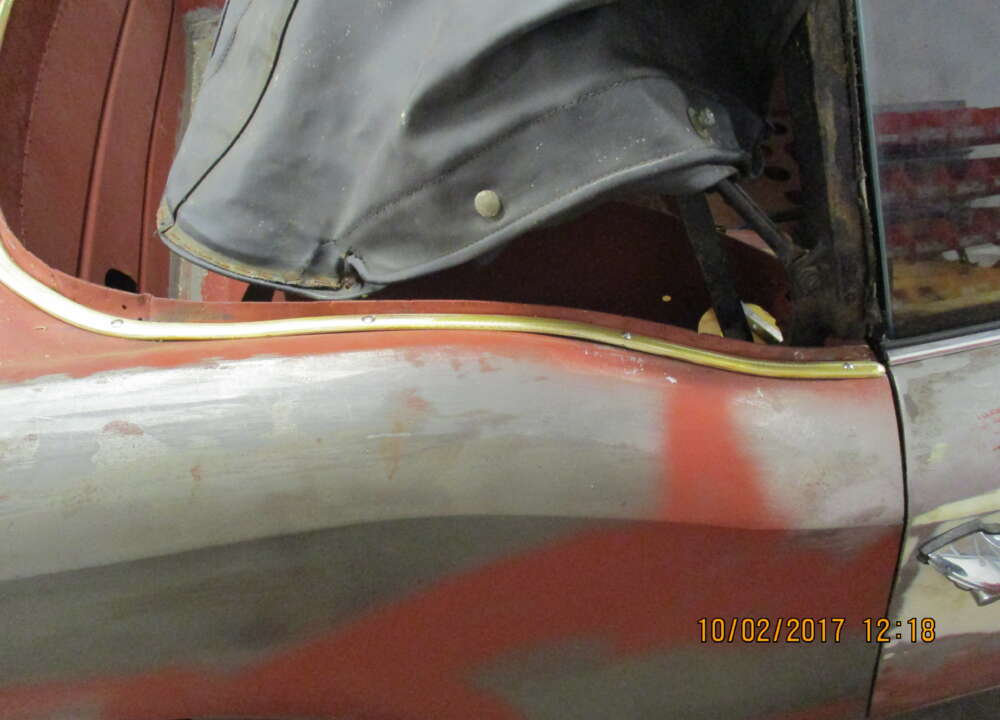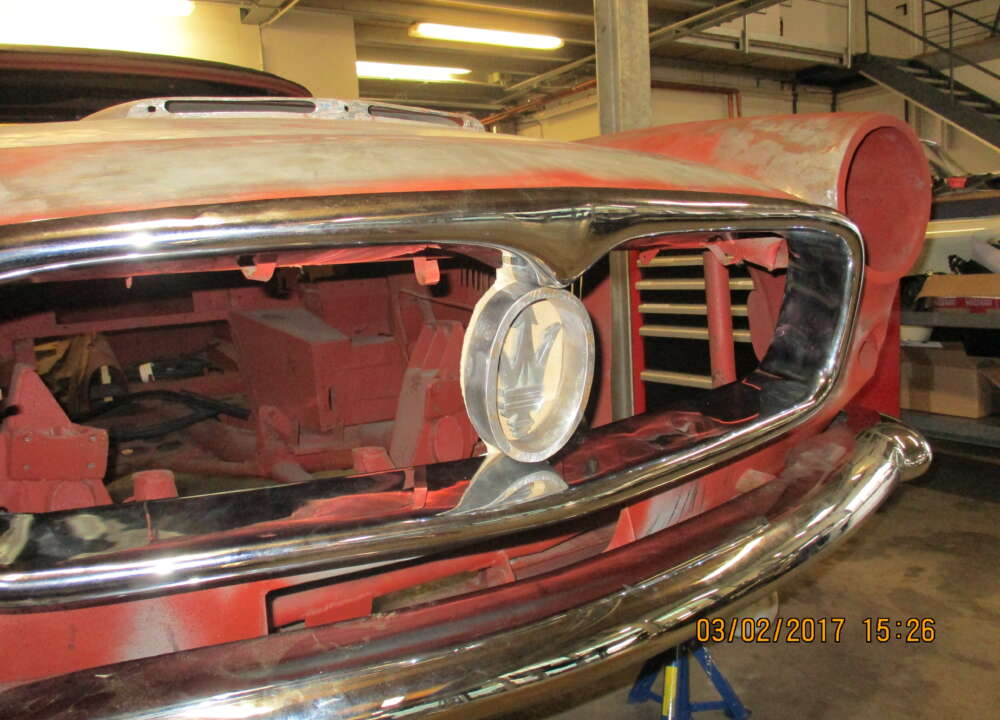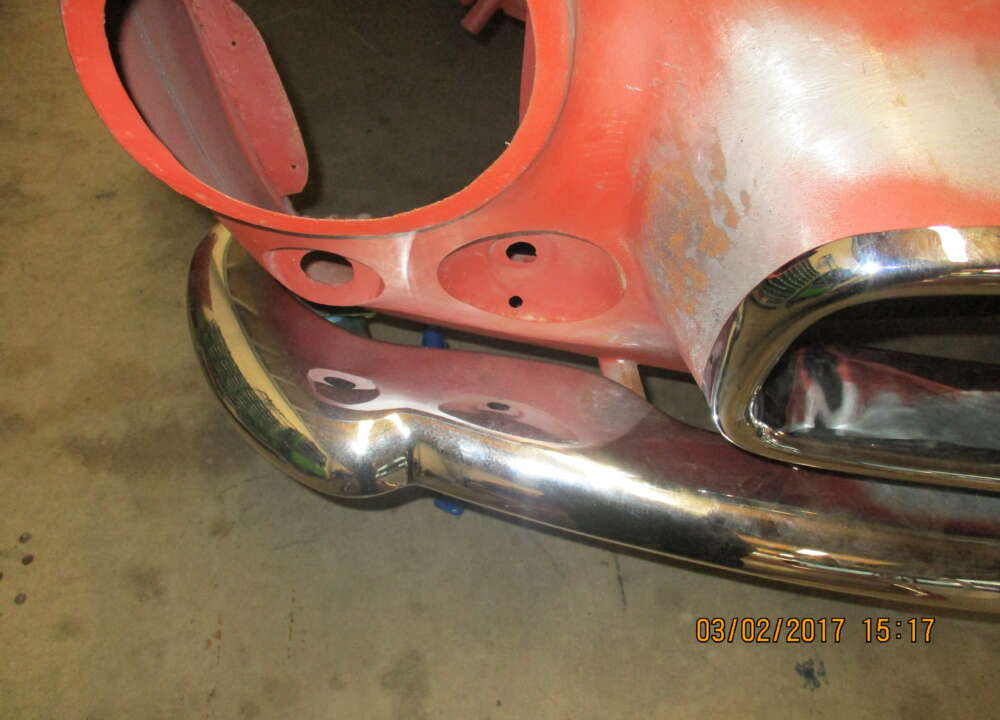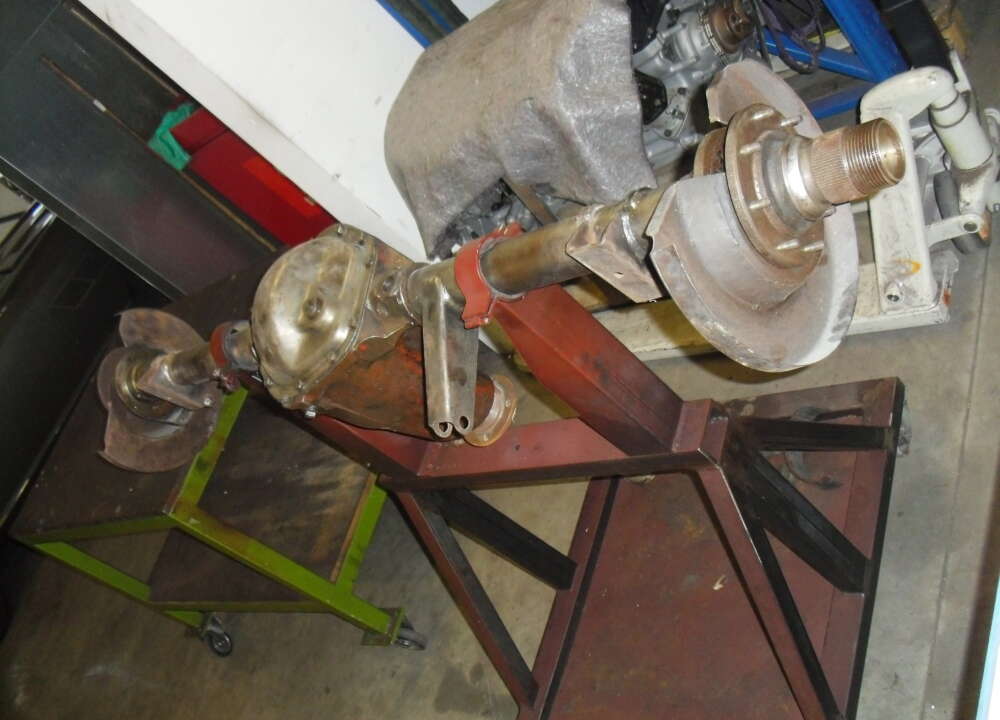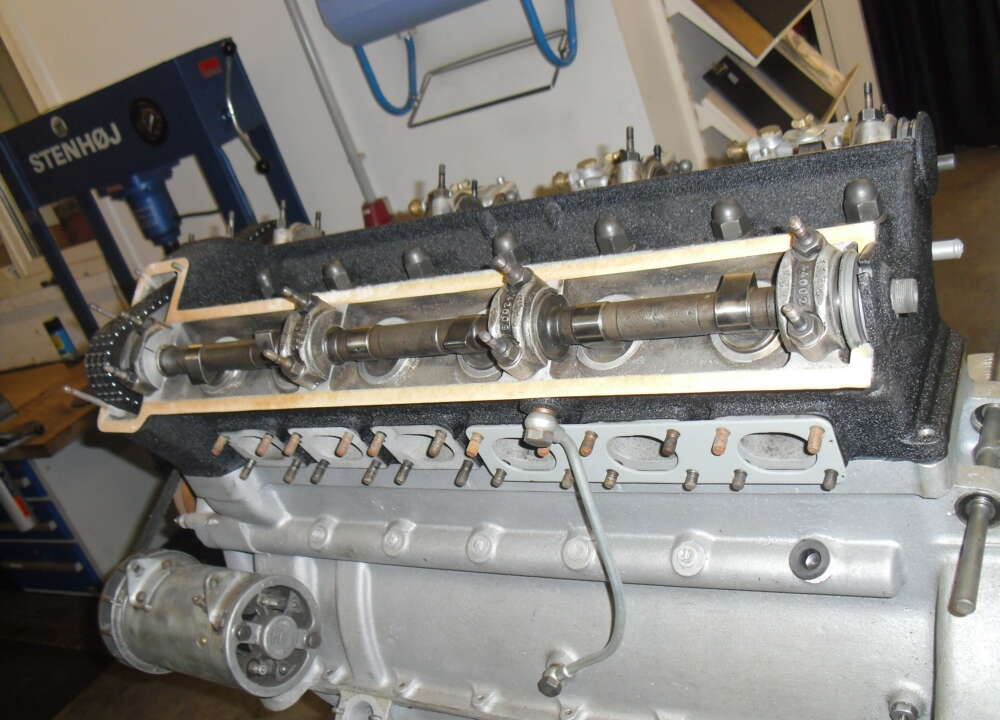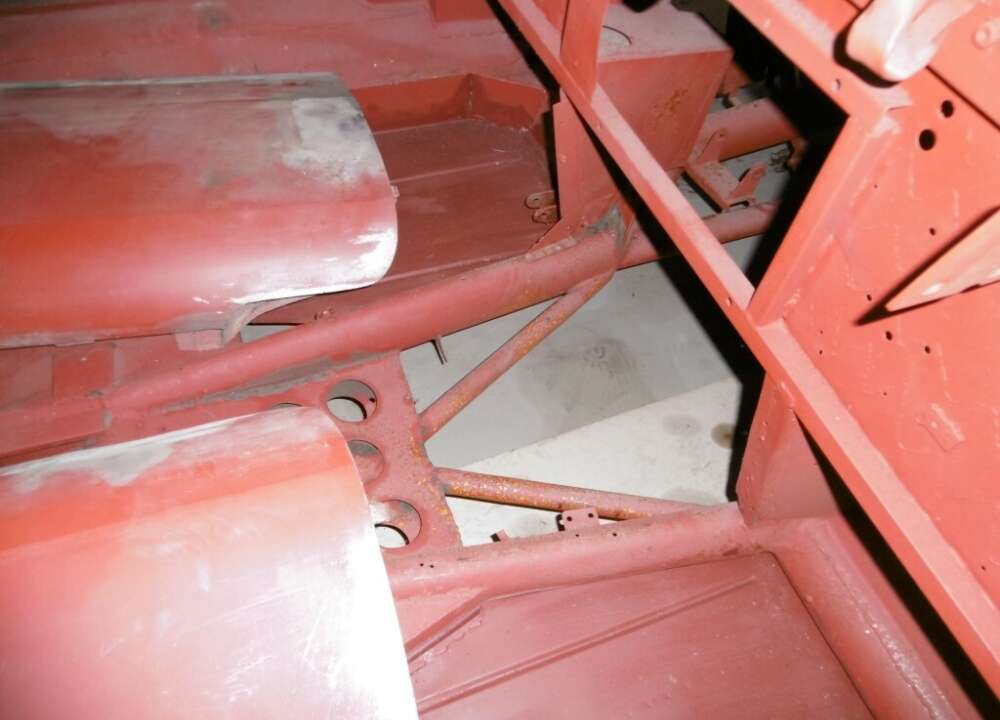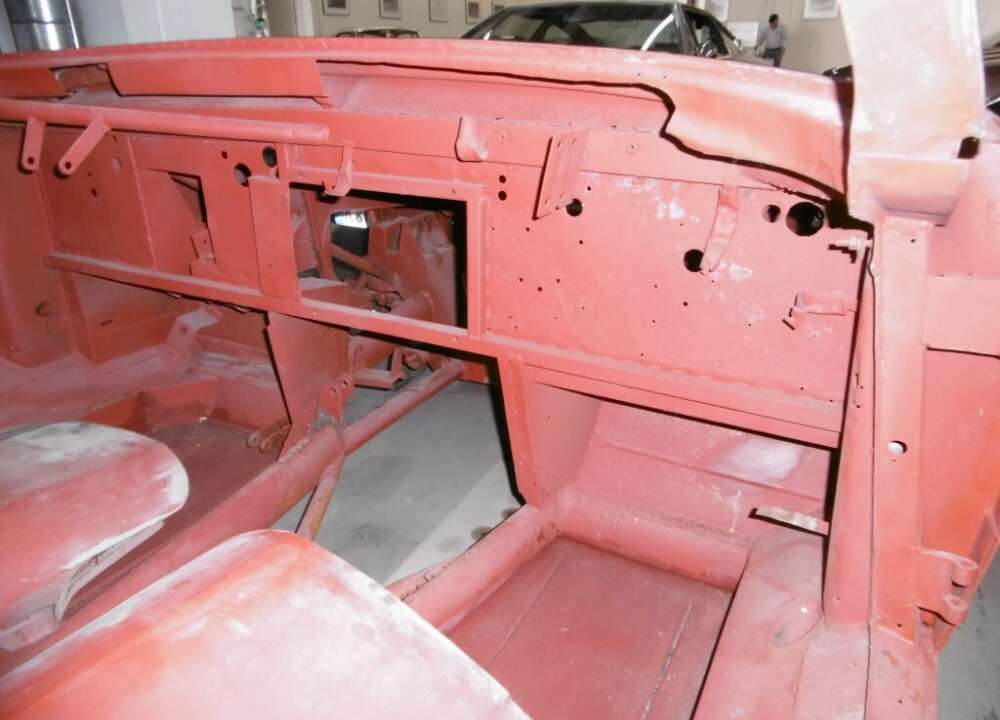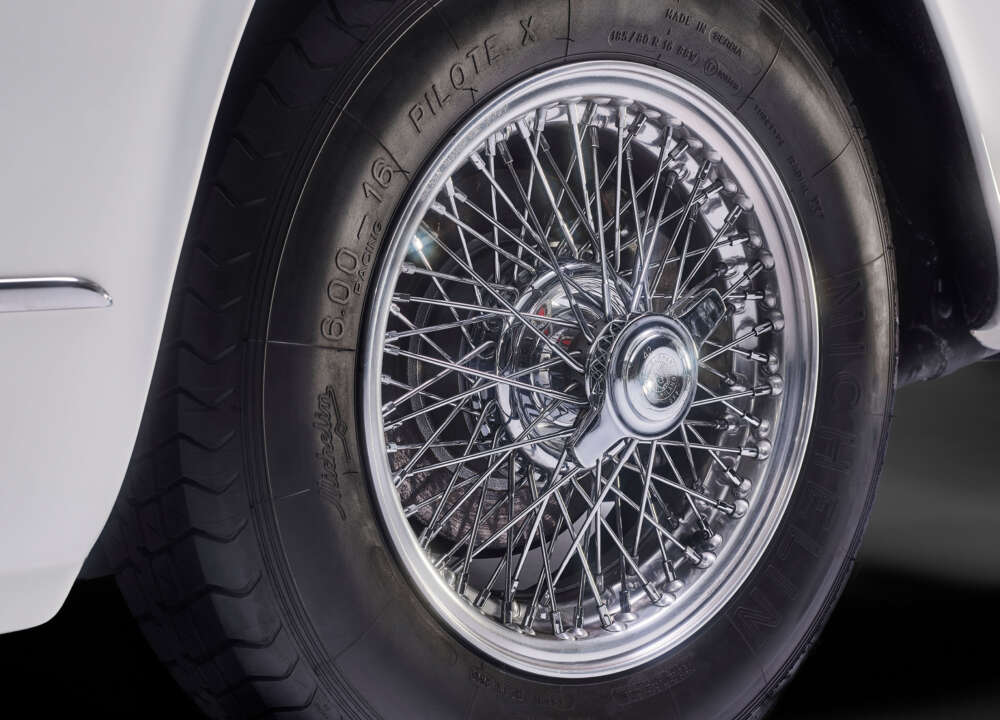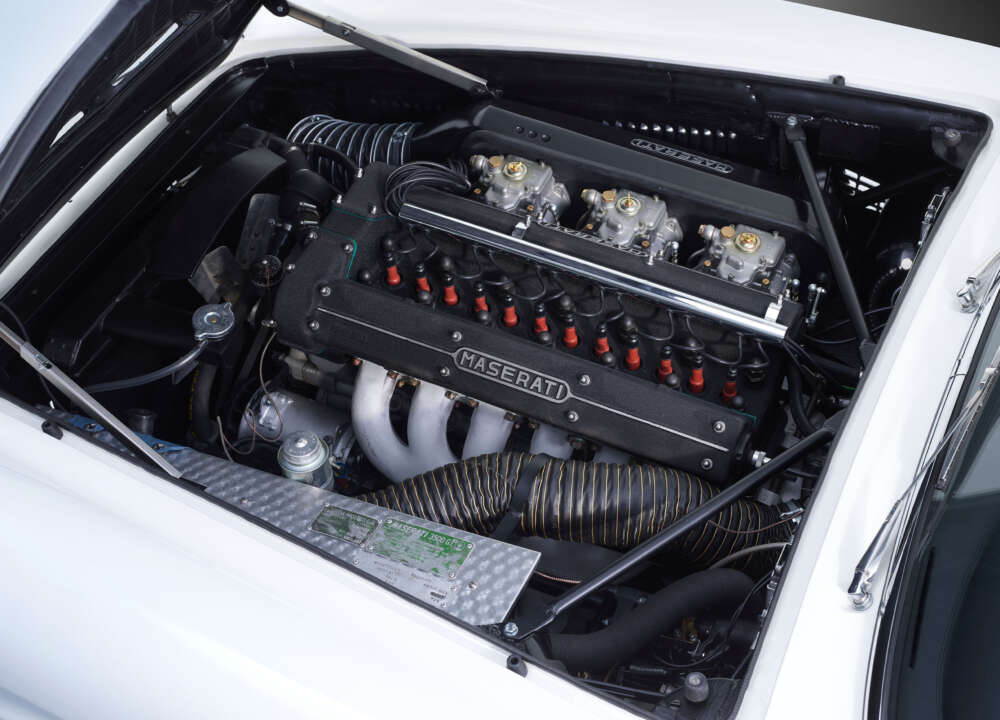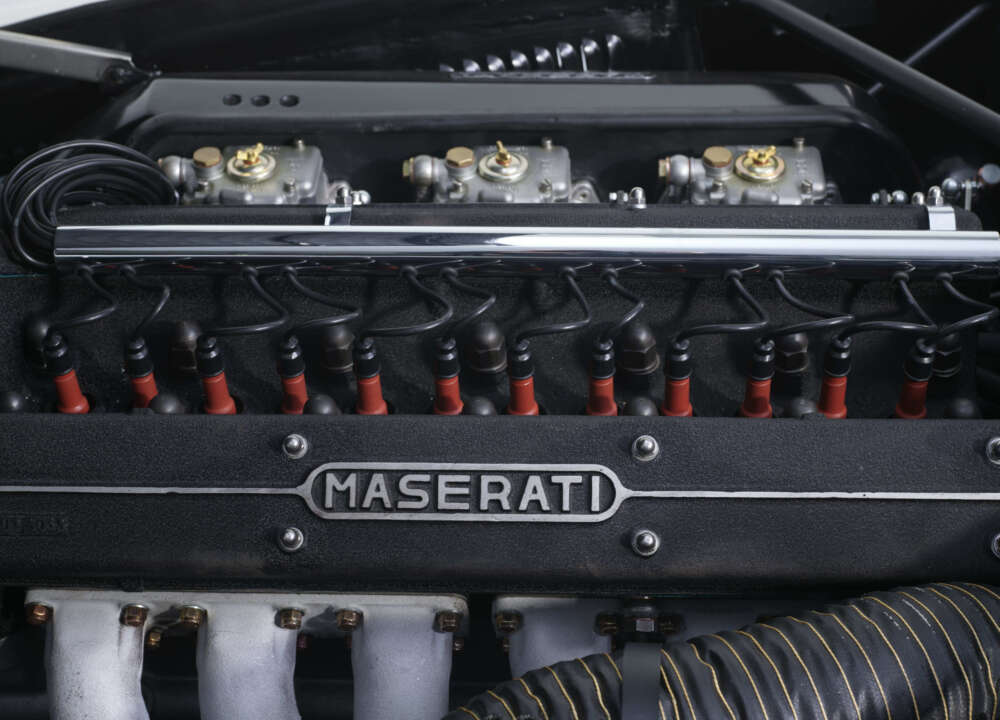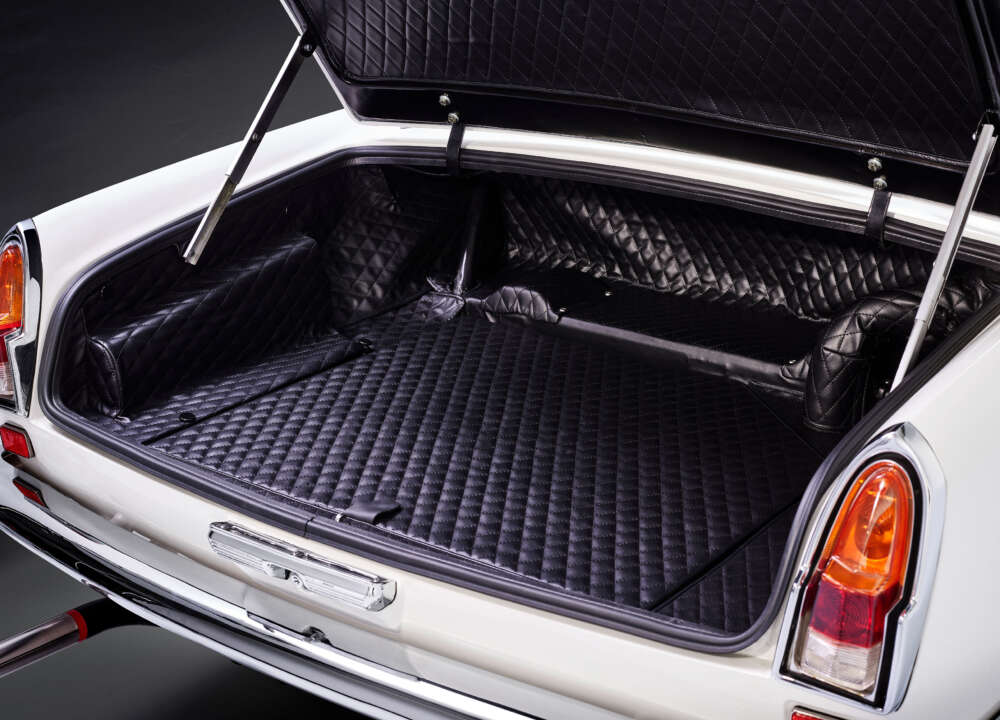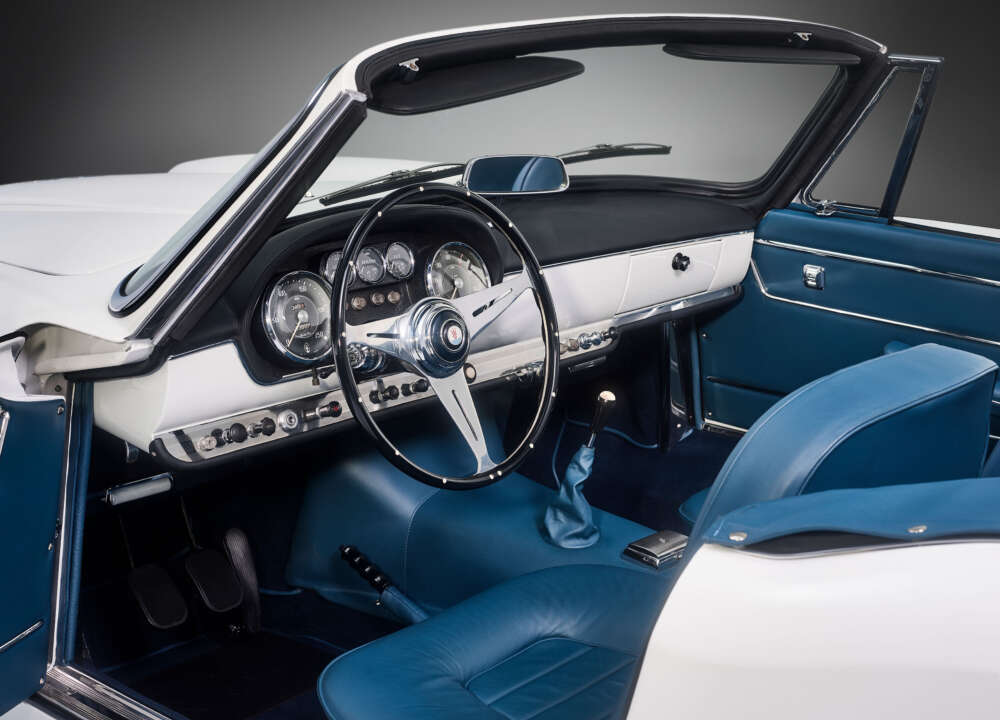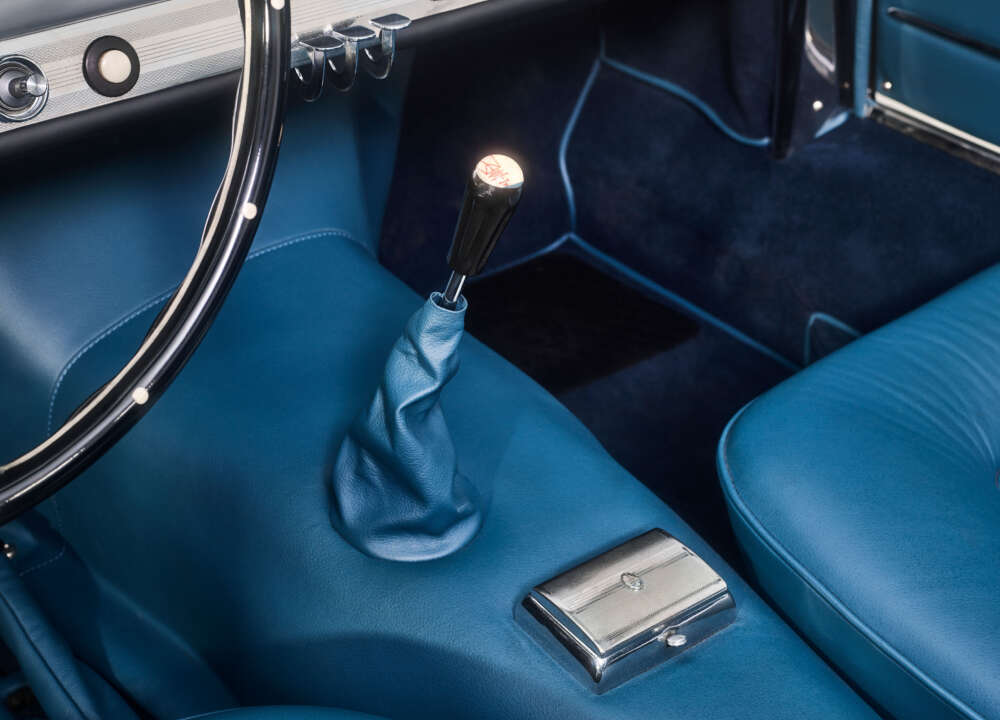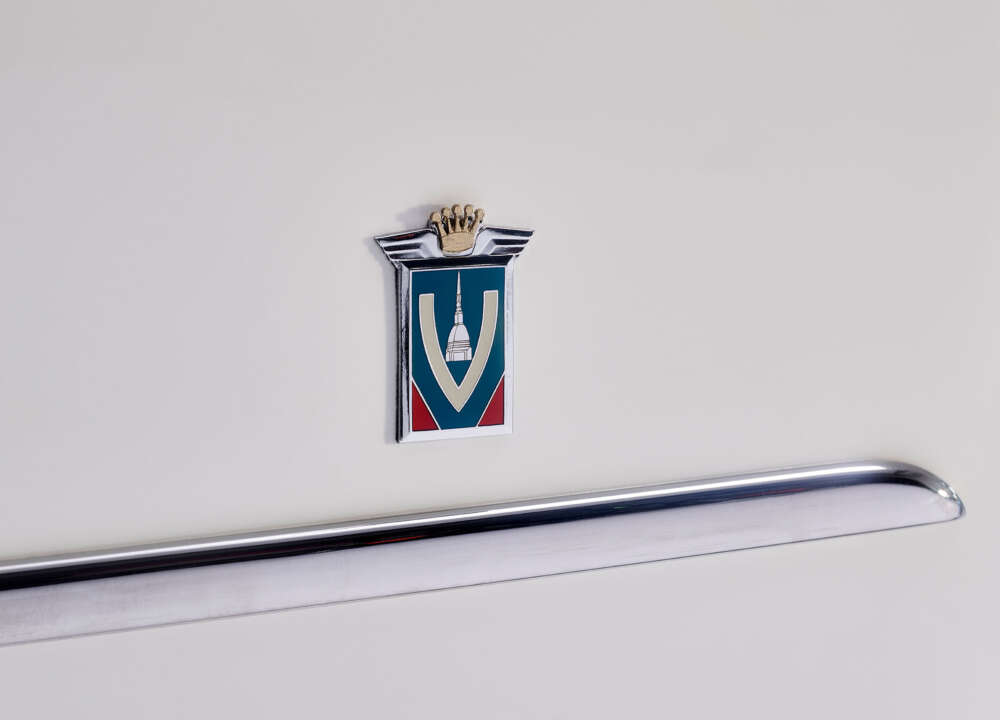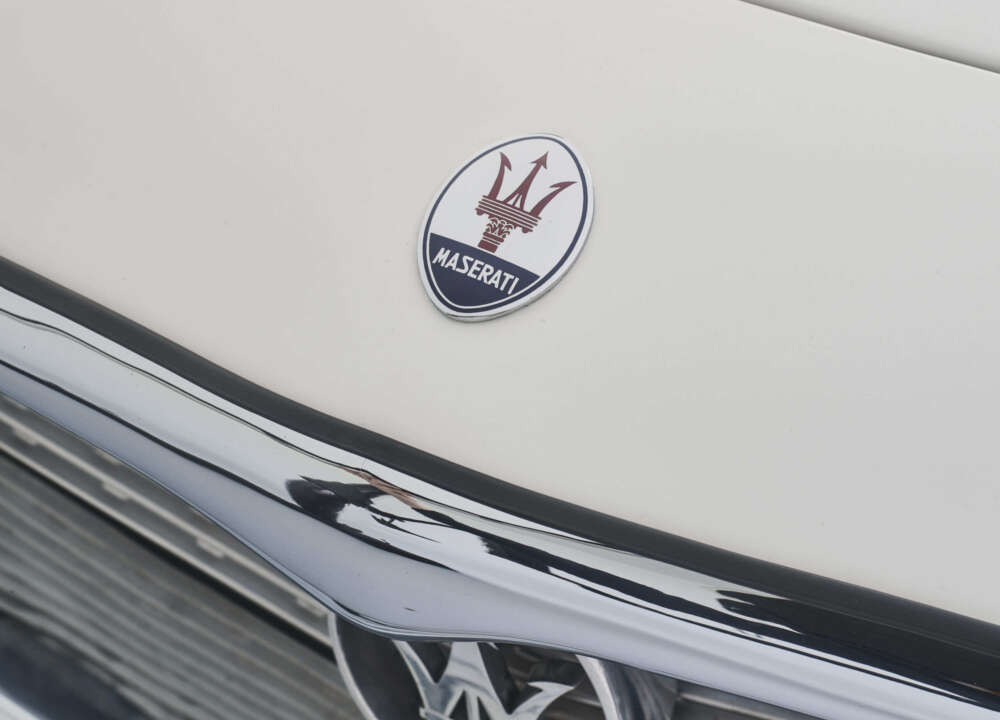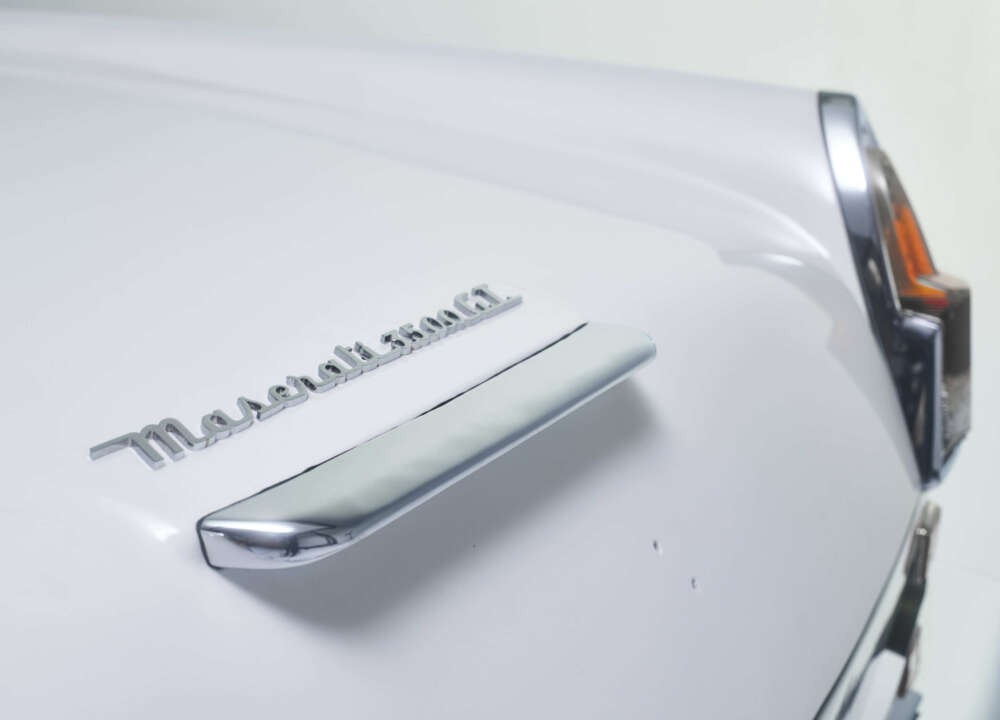Although this car is the 4th Vignale Spyder restoration carried out in our workshop, it was the most demanding one. We could not start from scratch but rather took over a restoration project 'in progress'. We found AM101.1421 in 2015 as what looked like a restored bodyshell. The car came in boxes filled with spare parts – many were unrestored, and some were partially restored. However, most of the restoration work was carried out to a vague standard in the 1990s.
Based on what we found, the rebuilding strategy was decided. That was to bring the car to a world-class standard without overstressing an already ambitious budget. It turned out that many crucial parts were missing. When planning the project, the primary challenge was to analyse and understand the quality of the work already done and the quality of the existing parts and components.
We outsourced and supervised the painting and interior trimming. All other work, including rebuilding, was carried out in our workshop. The restoration process required a total of 1800 hours. The major technical challenge was handcrafting all the missing parts – specifically chrome trim, window and door mechanisms, etc.
These cars are exceptional, and parts mutated and altered over the model's lifetime. Most technical components were rebuilt to our LP standard without compromise. We aimed to build the car to precise factory specs and still allow a satisfying driving experience by avoiding, to a maximum degree, the noises, vibration and heat.
Leo Peschl
Maserati 3500 GT Spyder by Vignale - 1962
Delivered in 1962 in Germany.
Back to original specs, including hardtop after a complete restoration.
Awarded with the Maserati Classiche Certification of Authenticity in April 2022.
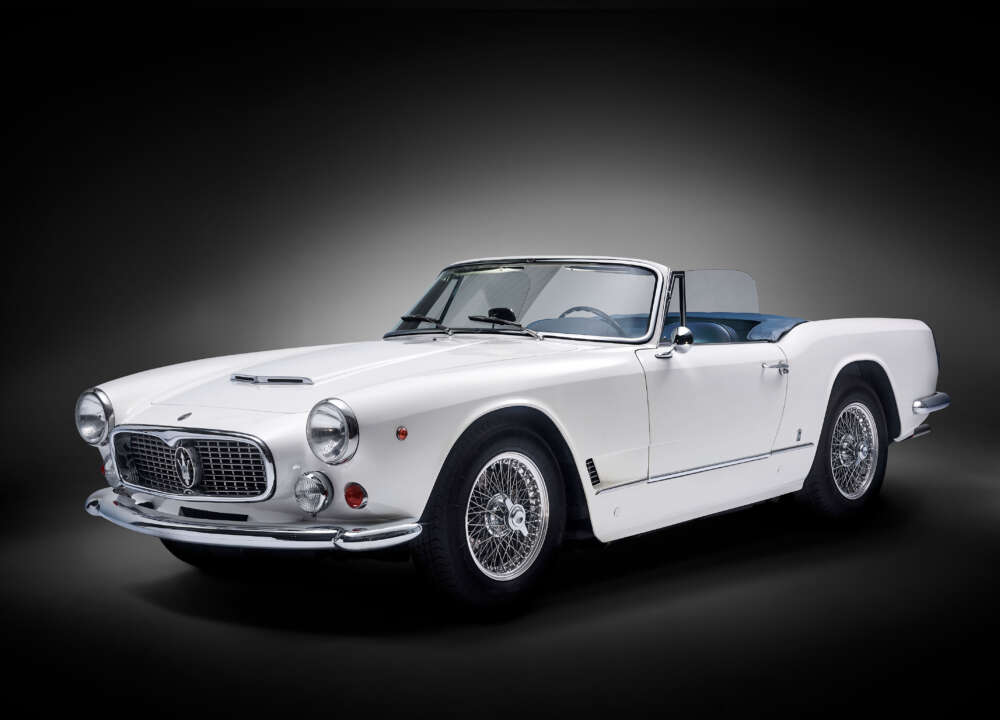

- Chassis number: AM101*1421*
- Engine number: 1180
- Build year: 1962
- Body: Spyder with matching hardtop
- Transmission: ZF 5-speed
- Matching number: Yes
- Matching colours: Yes
- Price: upon request
Maserati Classiche Certification of Authenticity
This car was certified at the Maserati factory in Modena in April 2022. It was checked against +300 criteria and matched against all the historical documents held by the Archivio Storico, not just the documents on this specific car and chassis number. A committee of external experts guarantees the Certification process.
Maserati Classiche announced on December 14, 2021, their program for the Certification of Authenticity of classic cars. It is part of their efforts to protect and promote the preservation and originality of the company’s automotive heritage. It is available to Maseratis older than 20 years and the special series, including more recent vehicles like the MC12 and the Quattroporte limited editions.
History
- The factory order shows the car was ordered on January 18th 1962, by Auto-König, Munich, Germany. The order was confirmed by the Modena factory four days later, on the 22nd. As shown on the test sheet, the car was finally ready for delivery on August 14th, 1962. Six days later the car was delivered to Auto-König. The first owner was Mr Mario Zoelch from Bad Tölz, about 50 kilometres from Munich. Under his ownership, the car drove some 26.000 kms over 2 years ( registration plate: TÖL-R 800).
- On August 18th, 1964, the car was traded in as part of a deal between Auto-König and Herr Mario Zoelch. Herr Zoelch ordered a Lancia Flavia 1.8 coupé. From then on, the car exchanged hands several times.
- The dates are featured on page 170 of the Walter Bäumer book - Maserati 3500 GT Spyder by Vignale. A large photograph is on pages 172-173.
- On August 23rd, 1965, the car was registered again in Munich, Germany. At some time, the car suffered front-end damage due to a collision with a Mercedes.
- In 1972 the car was owned by Martin E. Maier - (Meistersingerstrasse 106) in Munich, Germany, with licence plate M-RA 1325. It was now painted in yellow and offered for sale in Automobil Revue (issue from August 8th 1972, p.64).
- August 16th 1973, the car was involved in an accident with damage on the front left- and rear left side. At that time, the car had 82,199 km on the clock.
- April 8th 1974, sold to Adolf Johann Rail - Wulfertshausen, Germany, registered FDB-C 62.
- June 4th 1974, Mr Rail did not pay the agreed price. Mr Maier took the car back and out of registration.
- June 29th 1974, sold by Mr Maier to Manfred Weiss - Puhlheim, Germany, who paid DM 1,400 for the still damaged car.
- 1999: sold to the owner from Solingen, Germany, via restorer Manfred Strecker - Gottingen, Germany.
- 2012: is still under long-time restoration.
- 2015: July 25th, sold to a new owner, Mr Pisker from London, UK.
- 2016: The new UK owner decided to sell the car via Leo Peschl's workshop in Köln.
- 2017-2018: The car's history was researched, the entire car was audited, and the restoration was planned.
- 2019: Restoration finished with regular test drives in and around Cologne, Germany.
- 2020: The car has done its first 1000 kms in Belgium and has been back at the workshop of Leo Peschl for its first maintenance.
- 2022: The Vignale went to Maserati Classiche for inspection and was awarded their Certification of Authenticity.
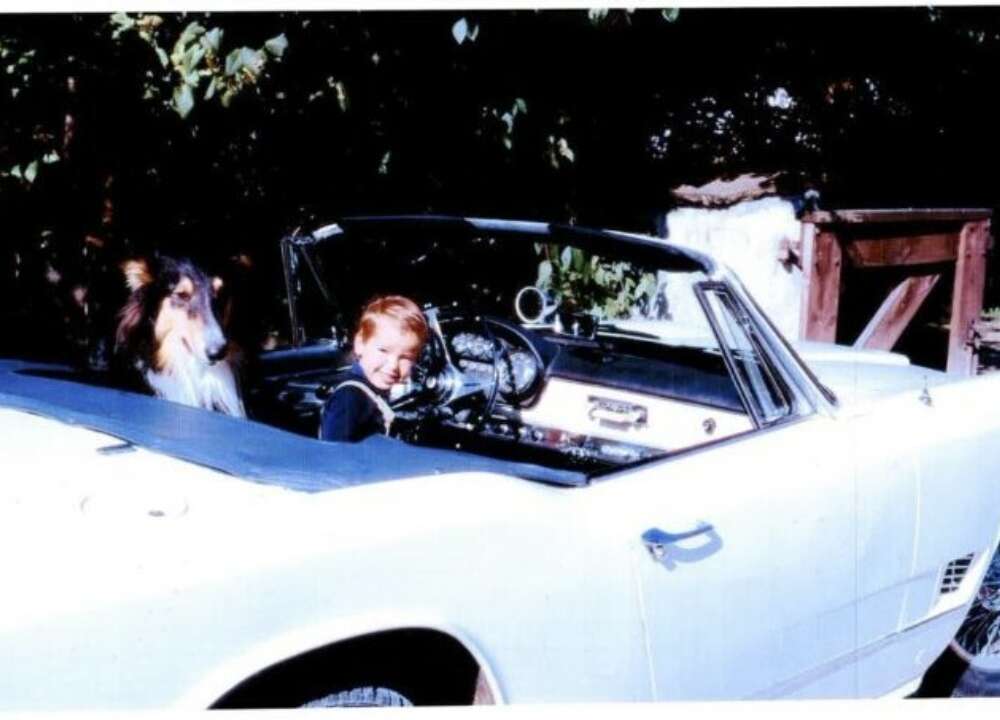
The 3500GT was a success in its niche. Demand led to the production of some 2500 examples; high numbers for such an exclusive machine. Of this number, only 242 of the Spyders were built, with a chassis two inches shorter than the coupé version and bodywork styled by Vignale.
This model is clearly defined as the first production Maserati Spyder. Maserati had waited 31 years between the birth of the first racing model in 1926 to the presentation of their first serially built road car in 1957. As the groundbreaking open-top production macchina of Viale Ciro Menotti, it will forever have a special place in the Trident's history books.
To learn more about this model visit our Vignale Spyder profile page.
The official Maserati documents show that this car's colour combination was Bianco Spino Max Meyer 12.231 for the body and a Pelle Blue (blue leather) interior with carpets in colour Blue 301.
The car has body number 217 and internal engine number 1180 and came with triple carburettors, the 5-speed ZF gearbox and wire-wheels. It is also one of the few Vignale Spyders that was delivered with the optional hardtop.
The build sheet shows internal engine number 1180 as well, which makes the connection between the engine and the car.
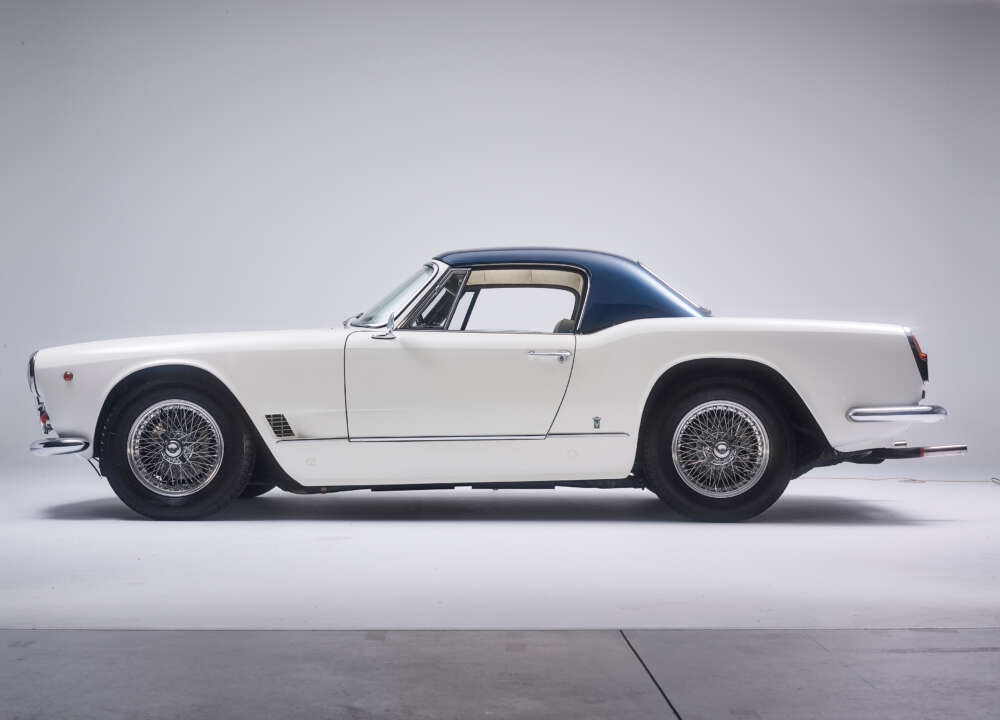
Restoration
AM101.1421 was restored to a Concours condition by Leo B. Peschl Classic Sports Cars in Cologne, Germany.
Austrian born Leo Peschl was successful in the trucking industry establishing a vast Caterpillar network in Russia which allowed him to indulge in classic Maserati. Unsatisfied with the care he found on the market, he started his own workshop in Cologne Germany and set about applying his typical perfectionism and productivity to the task, which resulted in a wonderful and well-organised workshop.
This was the fourth Vignale Spyder restored by Leo Peschl. A one-man per car methodology is in place. His innovative thinking and Teutonic sense of organisation have covered every aspect from parts sourcing to 3D printing, from identifying as precisely as possible the production variations between the first and last versions of any given Maserati model. All this is the result of an enthusiast driven approach, of his quest to establish the utopian workshop.
You can read more about Leo B. Peschl Classic Sports Cars in our book 'Classiche Masters, the finest workshops for classic Maseratis', or check out his profile page on our website to watch videos of Leo and his workshop.
Here is a very small selection of pictures that were taken before and during the restoration. The work started in 2016 and was finished in 2019. Over 6 Gigabytes of pictures are available, documenting the parts and the restoration.
Condition of the car
At the moment of writing this car is considered to be excellent, pristine. It has a documented nut & bolt ground-up restoration. It is stored professionally and comes with the above-mentioned vehicle history.
Following the restoration, the car has been test-driven by the workshop team and by the owner in Belgium. The car has been back in the workshop of Leo Peschl for its first maintenance.

